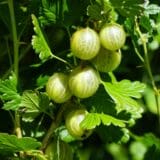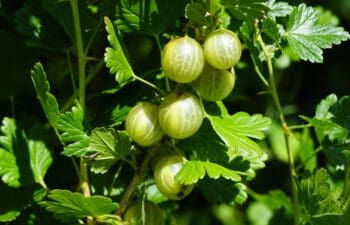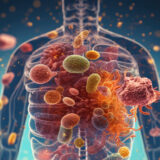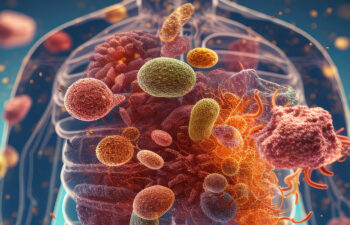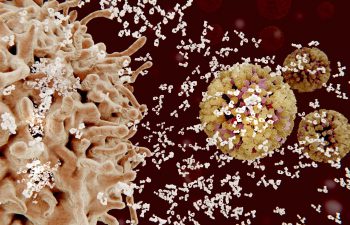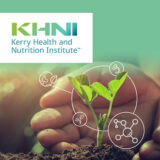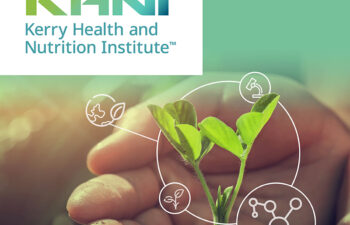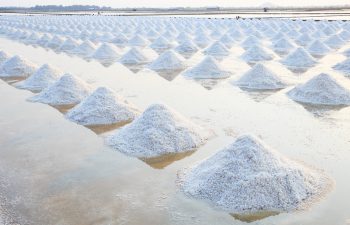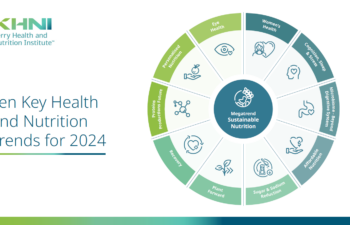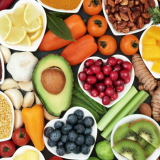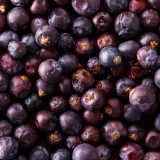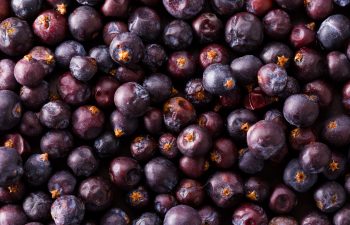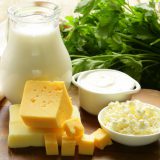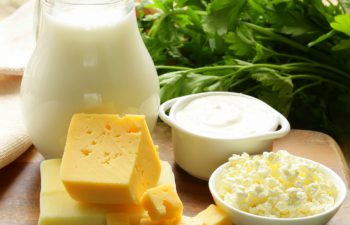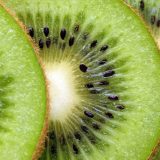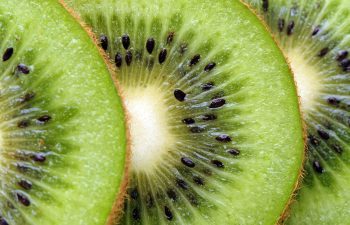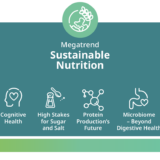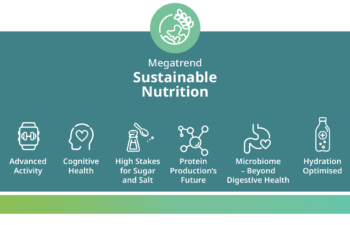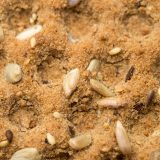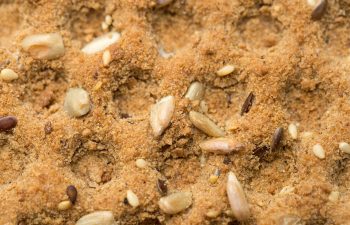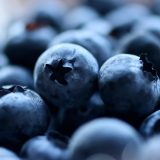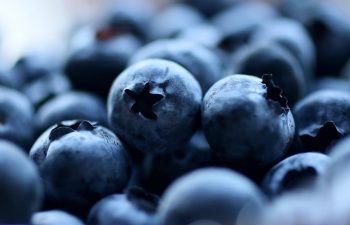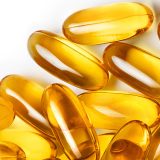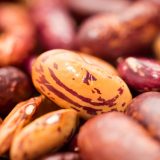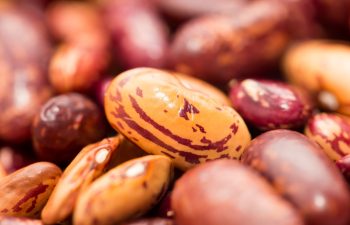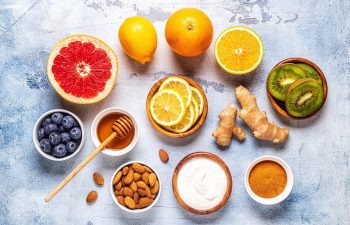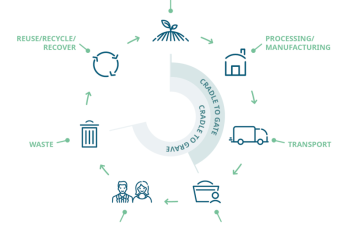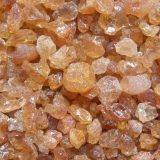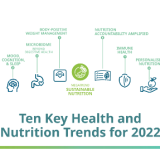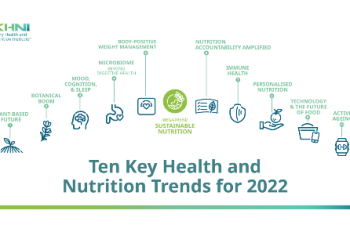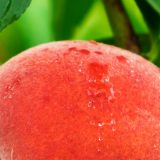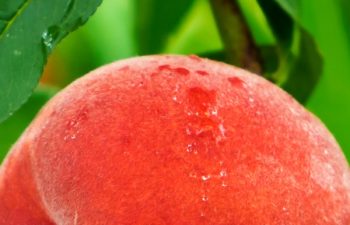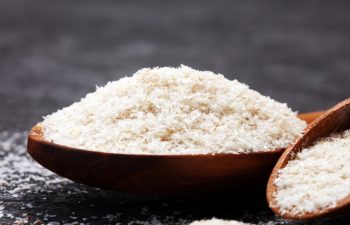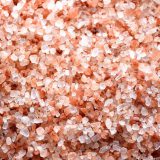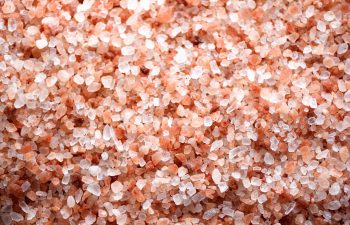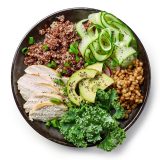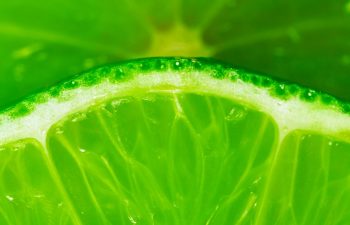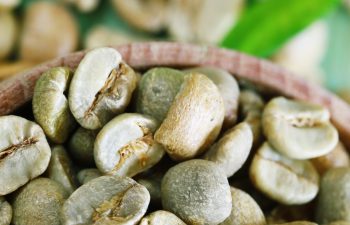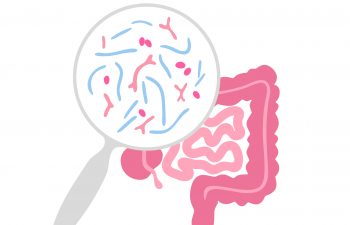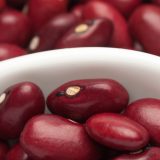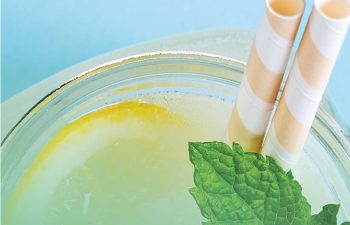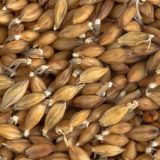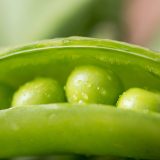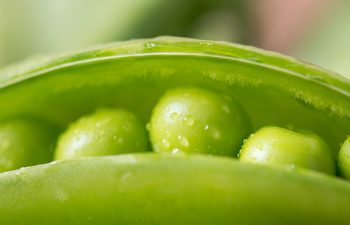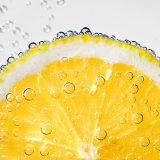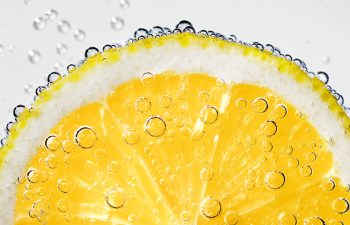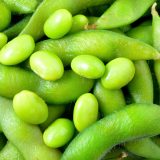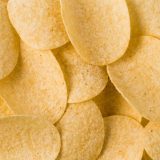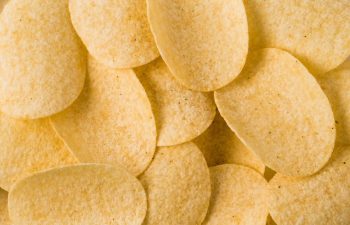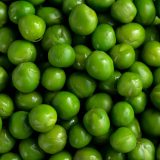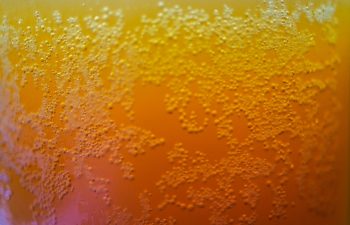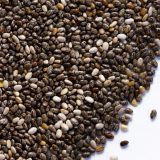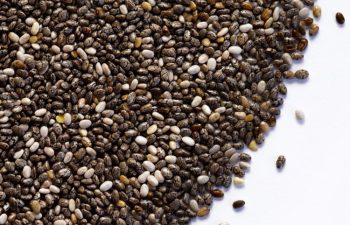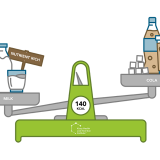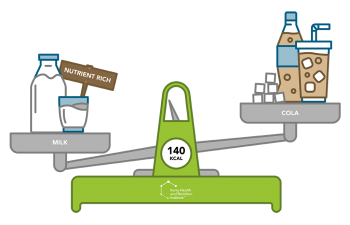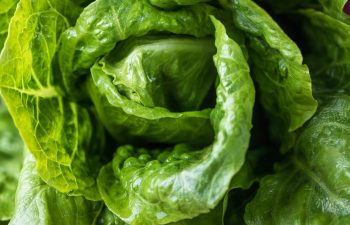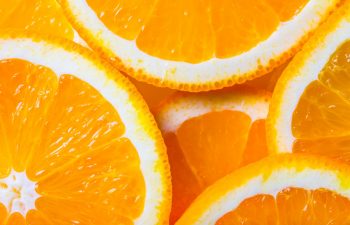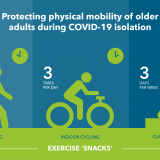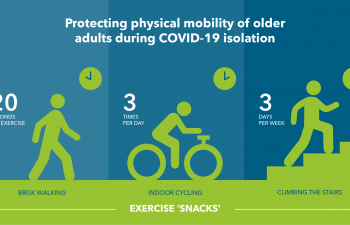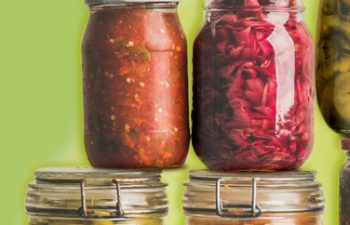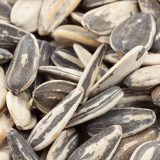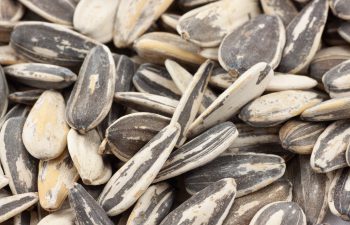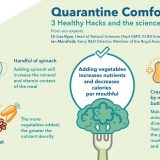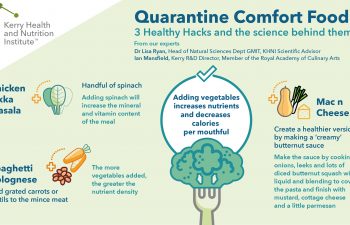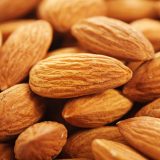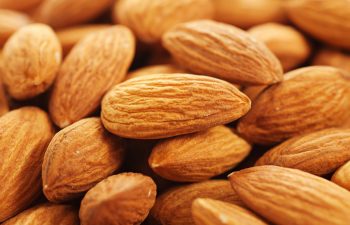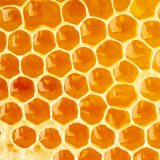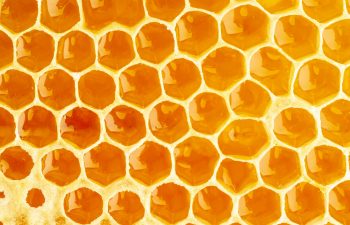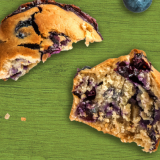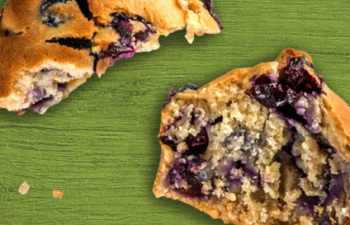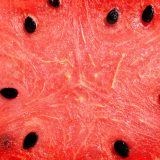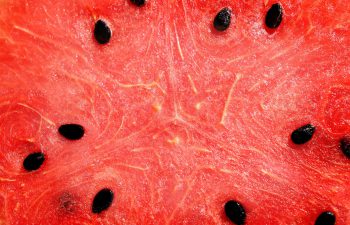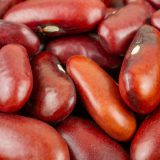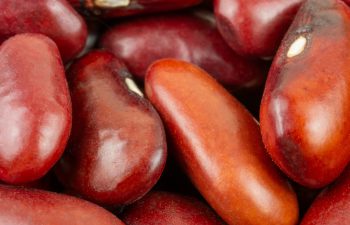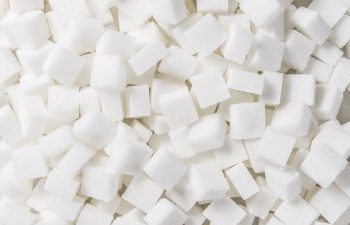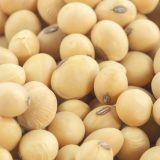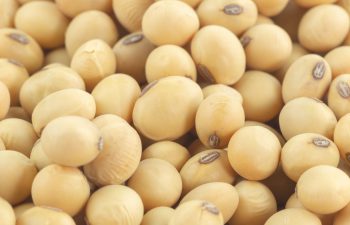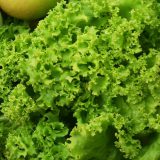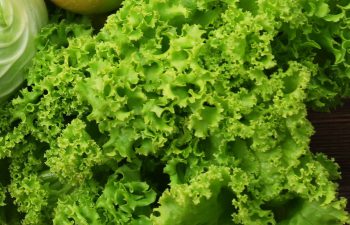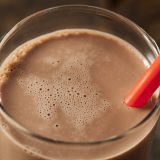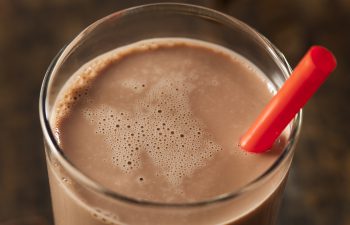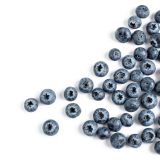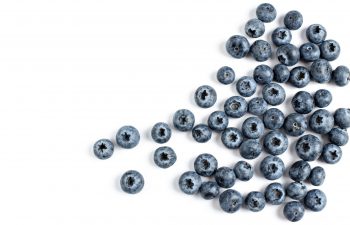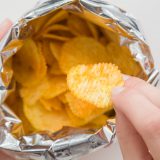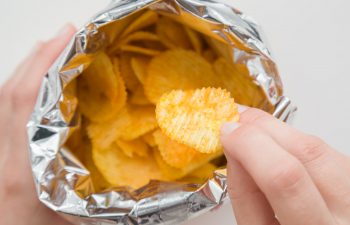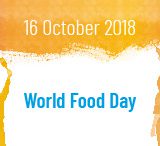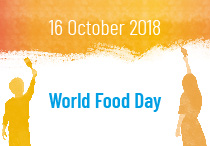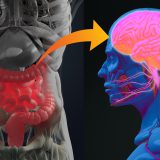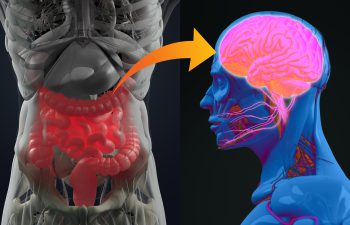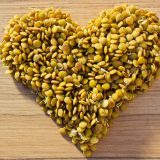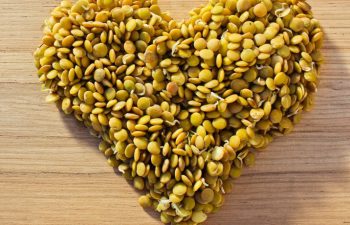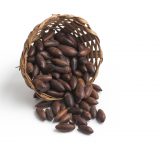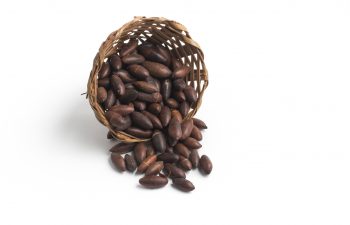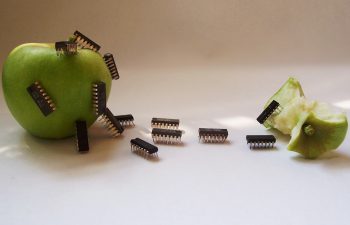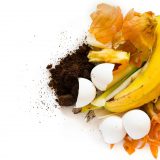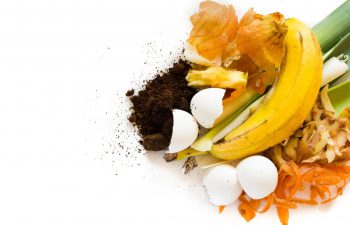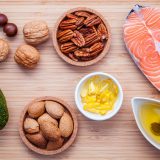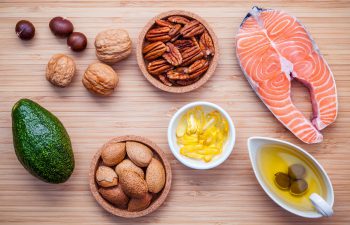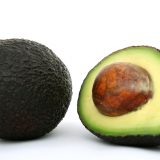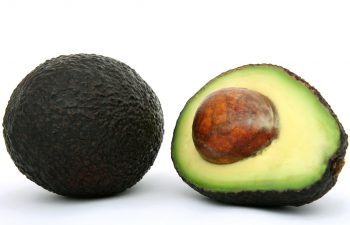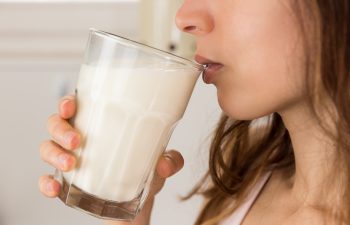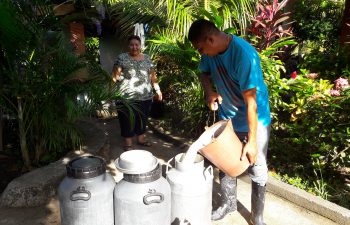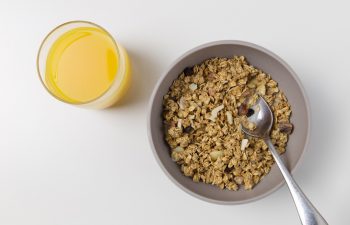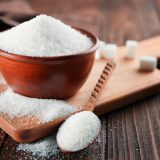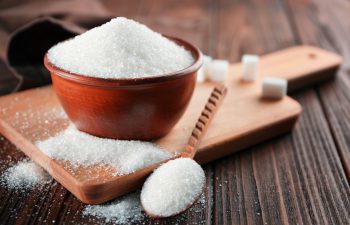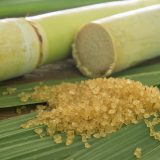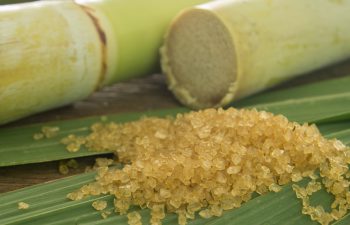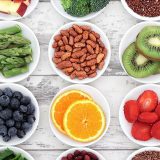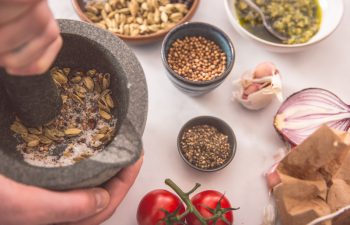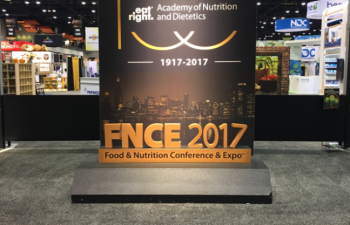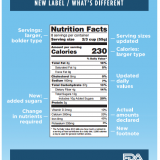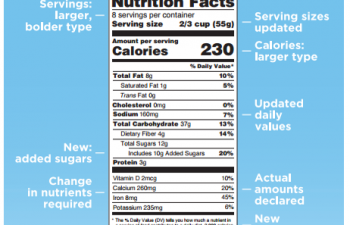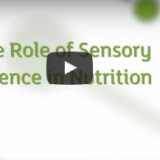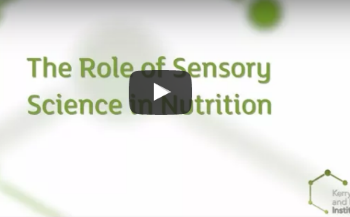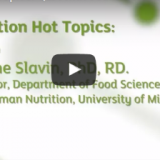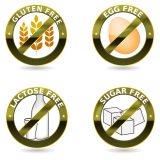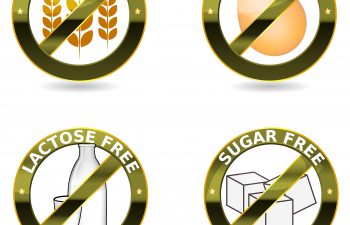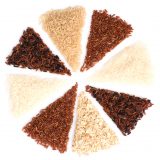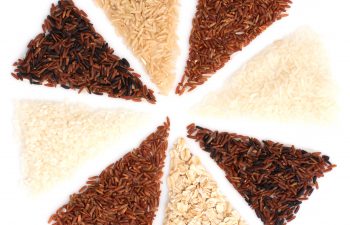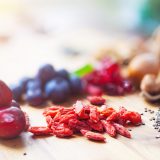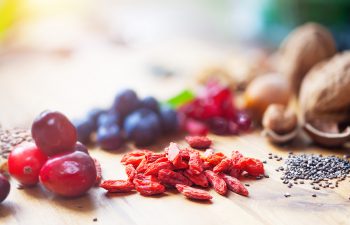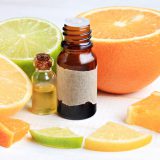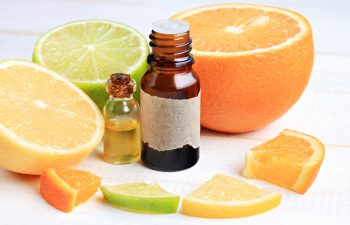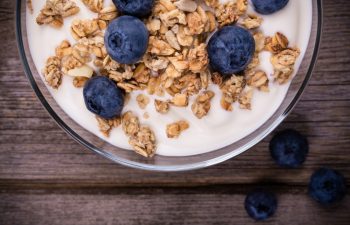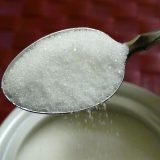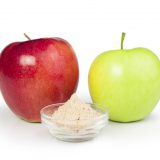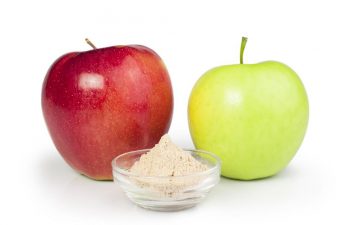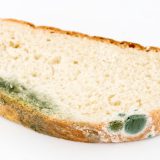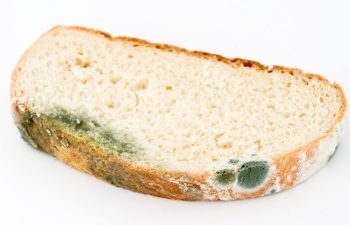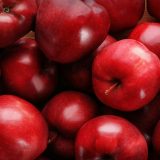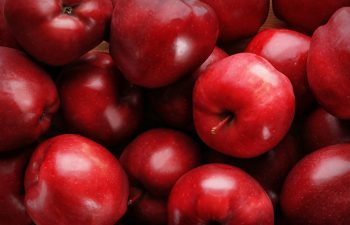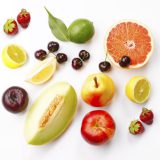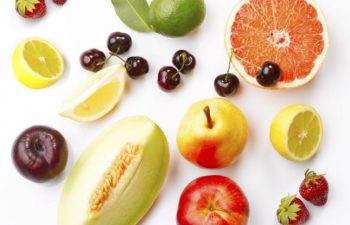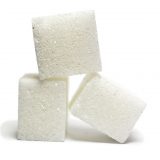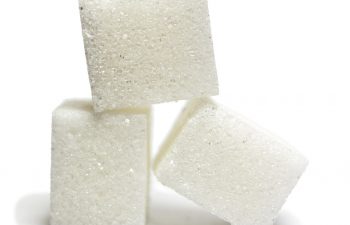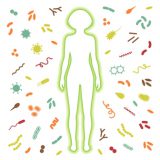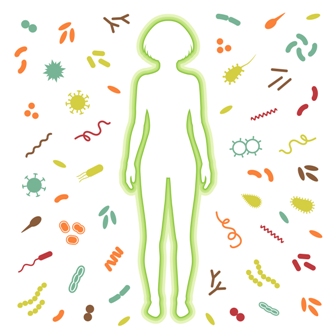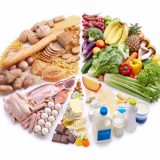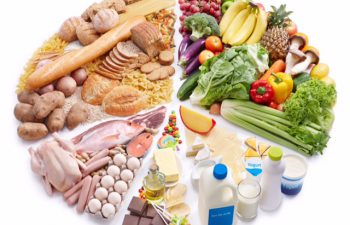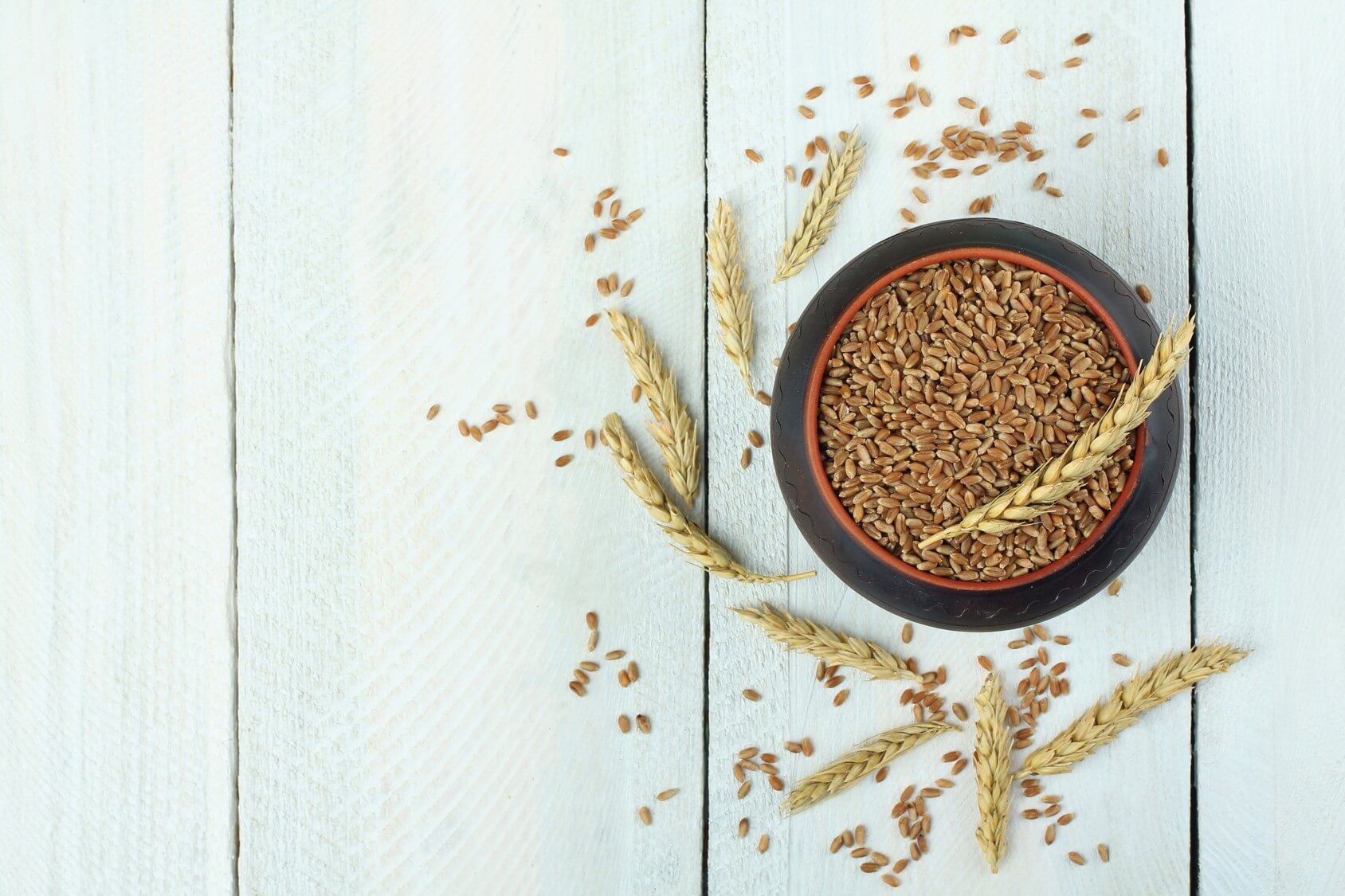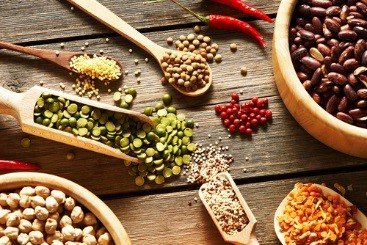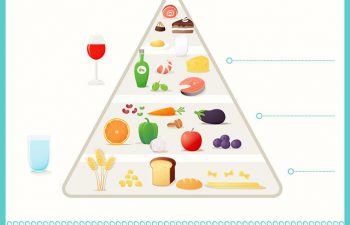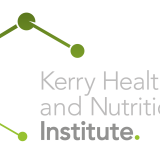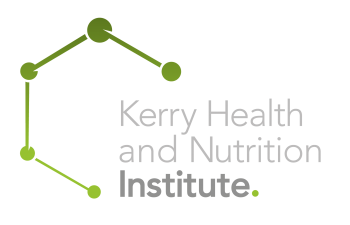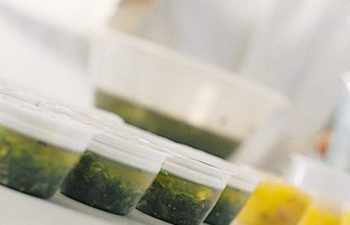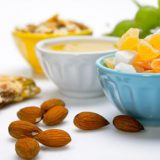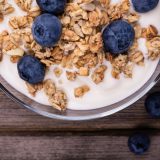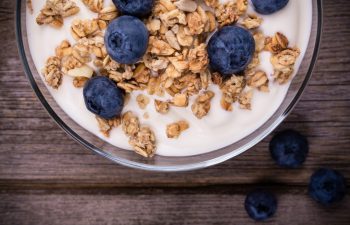This article is part of a mini-series on Women’s Health, exploring the unique health requirements and needs of women throughout their life stages. To read Part I: The Hormone Lifecycle Journey, click here. Whether it’s preparing for a family, going through pregnancy, or breastfeeding, motherhood is a transformative time in a woman’s life. Such an… Read more »
Expert Opinions
The food and beverage industry is evolving at pace. As sustainability goals grow in importance, consumer expectations shift, and regulatory frameworks adapt, there is a growing opportunity to explore new ways of innovating—guided by science, collaboration, and a shared commitment to better outcomes. Biotechnology and enzyme science are at the forefront of this shift—offering… Read more »
Over the past decade, the global prevalence of obesity has escalated to alarming levels, prompting significant public health concerns. In 2022, approximately 1 in 8 individuals worldwide were living with obesity (including 1 in 3 in the EU and in North America), with adult obesity rates more than doubling since 1990 and adolescent obesity quadrupling… Read more »
To address the nutritional needs of young athletes and guide them towards better performance, Kerry Health and Nutrition Institute, in collaboration with Kerry GAA, has launched a 3-part educational series titled ‘Food Fit for a Kingdom’. This series, hosted by John O’Connor, Head of Nutrition for Kerry GAA, and Aoife Marie Murphy, Senior Sustainable Nutrition… Read more »
Innovation customised for individuals health needs took center stage in what was Vitafoods Europe’s inaugural event in Barcelona, from May 20-22, 2025. The show presented the latest developments in the nutraceuticals industry with compelling speaker sessions and insights for attendees to enjoy. KHNI have identified three key trends which were most prevalent throughout the three… Read more »
Kerry Health and Nutrition Institute sponsored a sold out ‘Lunch and Learn’ session at Vitafoods Europe, held in Barcelona on 21st May 2025. Key experts from the industry discussed the journey of bringing nutraceuticals from niche positionings to the mass market. The opening keynote was impactfully delivered by Teddy Levenfiche, Co-Founder of the UK’s fastest… Read more »
The quality of our sleep the night before a busy day can determine whether we are energized for success or end up feeling fatigued and unproductive. Having a sufficient and consistent sleep schedule is very important for our overall health and well-being. Sleep supports our brain function, our the circulatory system, our metabolism and our… Read more »
To help young athletes meet their nutritional needs and improve their performance, the Kerry Health and Nutrition Institute, in collaboration with Kerry GAA, has launched a 3-part educational series titled ‘Food Fit for a Kingdom’. This series, hosted by John O’Connor, Head of Nutrition for Kerry GAA, and Aoife Marie Murphy, Senior Sustainable Nutrition Manager… Read more »
In recent years, the global food and beverage industry has faced significant disruptions, particularly in the supply of cocoa, citrus, and coffee. Each of these raw materials are frequently used in many products consumed in every region of the world. These challenges have led to a surge in prices, scarcity, and supply chain disruptions not… Read more »
To address the nutritional needs of young athletes and guide them towards better performance, Kerry Health and Nutrition Institute, in collaboration with Kerry GAA, has launched a 3-part educational series titled ‘Food Fit for a Kingdom’. This series, hosted by John O’Connor, Head of Nutrition for Kerry GAA, and Aoife Marie Murphy, Senior Sustainable Nutrition… Read more »
On April 8th, 2025, the Kerry Health and Nutrition Institute (KHNI) hosted a webinar titled “What’s Shaping the Future of Food: Key Health and Nutrition Trends for 2025.” Experts in neuroscience, nutrition, food science, and sports performance explored how evolving science and consumer needs are shaping the future of food. Dr. Laura Collins… Read more »
What is Vitamin D? Vitamin D is a fat-soluble vitamin that is necessary for bone health and overall immunity. It plays an important role in calcium absorption and as well as regulating both the innate and adaptive immune responses. Recent research suggests that it may also play a role in protecting against some chronic diseases.… Read more »
The Kerry Health & Nutrition Institute (KHNI) is celebrating its 10-year anniversary in 2025, marking a decade of dedication to advancing health and nutrition science. Established in 2015 and born out of our commitment to sharing the science of healthier food with the food industry, the KHNI brings together a network of over… Read more »
The Importance of Focusing on Women’s Health While the life expectancy of both men and women has risen over the last 200 years, this does not always translate to a better quality of life. Women may be living longer, but the extra years are spent in poor health due to the disparity in women’s… Read more »
Amla, also known as Phyllanthus emblica Linn (Euphorbiaceae family) or the Indian gooseberry is referred to as balakka, kimalaka, kemlaka, kemloko, or malaka in Indonesia. The plant has thirteen synonyms listed in the World Flora Online database. This plant has been revered for centuries in the traditional medicine systems of Southern Asia, such as Ayurveda,… Read more »
The Kerry Health & Nutrition Institute (KHNI) in celebration of a decade of innovation and scientific discovery, hosted a webinar on Friday, January 24th, 2025, broadcasted from Singapore. This special event showcased key health and nutrition trends shaping consumer preferences in the South East Asia region, and explored the Future of Sustainable… Read more »
Companies are facing increasing regulatory and consumer pressure report robust sustainability metrics and targets. Consumers have become more educated about sustainability and are actively researching product claims and expose greenwashing. In response to these pressures, companies are increasingly adopting regenerative agriculture practices which offer a sustainable solution to progress their ambitious sustainability commitments. What… Read more »
As the year comes to a close, we would like to reflect on some of the most viewed content from Kerry Health and Nutrition Institute in 2024. From sustainable nutrition and biotechnology to cognitive and women’s health, these articles captured the essence of innovation and science-forward thinking in the food and nutrition space. Here are… Read more »
On October 15th, 2024 experts gathered for an informative webinar exploring Taste Modulation and how it can be used to support positive nutrition. You can watch this full webinar by clicking the video above! David Deeley (Sr. Insights Manager, Kerry) begins the webinar (at 1:29) highlighting the importance of the consumers’ needs and wants… Read more »
Members of the KHNI Scientific Community had the privilege to attend and present research at the 22nd World Congress of Food Science and Technology in Rimini, Italy. The attendees ranged from academic researchers, government body representatives, students, food scientists from industry and many more. There was great interest in the poster and paper on the… Read more »
An exciting and inspiring few days spent in Dublin’s Convention Centre for the European Congress of Immunology (ECI) 2024, where Kerry Health and Nutrition Institute sponsored a symposium on Wellmune-Induced Innate Trained Immunity. ECI is an event in its seventh year, organised by the European Federation of Immunological Societies (EFIS), that represents more than 14,000 individual immunologists… Read more »
Video Credit: Food & Beverage Asia In conjunction with United Nations Climate Week 2024, the Kerry Health and Nutrition Institute had the privilege to host a hybrid event on 27 September 2024. This event brought together foodservice industry and nutrition experts for a dynamic panel discussion, broadcasted from the Kerry Global Business Services… Read more »
Can you quantify the value of extra shelf-life days in food? As a consumer, it can allow for more time in a busy life to eat foods before they end up as unintended waste. This time can be about saving money and protecting health. For the industry, it can be about longer and more resilient… Read more »
The intersection of nutrition and science continues to break new ground as Kerry Group, a global leader in taste and nutrition solutions, partners with APC Microbiome Ireland, a world-renowned research center focused on microbiome science. This collaboration marks a significant step forward in understanding and leveraging the gut-brain axis—a complex system that plays a crucial… Read more »
Cognitive health Cognitive health refers to the state of an individual’s cognitive abilities, including memory, attention, reasoning, language, and problem-solving skills. Maintaining cognitive health is essential for overall well-being and quality of life, as cognitive decline can affect daily functioning and lead to conditions such as dementia and Alzheimer’s disease 1. Stress The impact of… Read more »
Premenstrual disorder (PMD) encompasses a spectrum of symptoms experienced by women in the luteal phase of the menstrual cycle, manifesting as physical, emotional, and behavioral changes that can significantly impact daily life. While the exact cause of PMD remains multifactored and complex, emerging research highlights the influential role of diet and the gut microbiome in… Read more »
Deep dive into the world of biotics and the microbiome. This webinar looks to explore the science behind postbiotics, along with the potential role postbiotics can play as a vehicle to meet consumer needs in not only digestive health, but beyond this to other areas of consumer interest, such as immune and cognitive… Read more »
Vitamin B12 is a water-soluble vitamin, also known as cobalamin, this cannot be made in the body and needs to be ingested through food, supplements, or medication. It is essential for red blood cell formulation, keeping your nerve and brain function healthy, production of DNA, and maintaining cell metabolism. Vitamin B12 is absorbed by the… Read more »
The U.S. Department of Agriculture (USDA)’s recent updates to child nutrition standards have significant implications for the food industry, particularly for manufacturers that produce foods for school meal programs. These changes, which include stricter limits on added sugars and sodium and an emphasis on whole grains and locally sourced foods, require manufacturers to adapt their… Read more »
Earth Day, celebrated every April 22, is a time to reflect on our planet’s health and consider how our everyday choices impact the environment. It is important to recognize the relationship between Earth Day and nutrition/sustainability. Highlighting why these concepts are essential in the fight against climate change and environmental degradation. Understanding Sustainable Nutrition Sustainable… Read more »
Ready to eat (RTE) meat products have short shelf lives unless special precautions are taken to maintain and extend their shelf life. They are subject to spoilage by various bacteria that cause organoleptic and eating quality changes that make them unacceptable to consumers. They are also subject to some pathogenic bacteria that can cause food… Read more »
Almost 100 years ago when childhood mortality due to infectious disease was high, Dr. Carl Naslund noticed a curious thing – Swedish children that had received a tuberculosis vaccine not only were protected from tuberculosis but were three times less likely to succumb to any disease compared to the children who weren’t vaccinated. Decades later,… Read more »
Professor Helen Sheridan BSc, MA, PhD, FRSC, FTCD: Kerry Health and Nutrition Institute is pleased to announce that Dr. Helen Sheridan has joined our Scientific Advisory Council. Helen is a Professor in Natural Product Science at the School of Pharmacy and Pharmaceutical Sciences (SoPPS) at Trinity College Dublin (TCD). She is founder and academic… Read more »
KHNI has determined that Sustainable Nutrition is a key Mega Trend shaping the industry in 2024. Food is at the heart of one of the biggest challenges of our time – how do we feed a growing population whilst managing the accelerated environmental degradation of our planet? We urgently need to find solutions. It… Read more »
Do you know your pro-biotics, pre-biotics, botanicals and supplements, from your vitamins, macro-nutrients and micro-nutrients? All can help women manage their physical and emotional wellbeing, but what should you consider taking and when? “Nutrition plays a role in women’s health, both in managing different life stages and in promoting long-term health, but with so many options… Read more »
Salt intake is significantly higher than the daily recommendation in many countries. What is being done globally to reduce salt intake, and how effective have these strategies been?
The past decade brought a rise in sugar-related discussions amongst the food and beverage industry, public health officials and the general population. While demand for sugar and sweeteners has never been higher, the need for sugar reduction has also continued to grow. Sugar, in the form of the carbohydrate glucose, is the primary energy of… Read more »
The future of food production relies on significant advances in microbiology, bioprocessing, enzyme technology and artificial intelligence, in order to feed a growing population, set to reach almost 10 billion people by 2050, while also reducing the negative impacts of food production on the planet. Recent advances in synthetic biotechnological processes such as precision fermentation… Read more »
In recent years, the importance of ensuring that the food we eat is sustainably sourced and nutritionally complete has been to the forefront for consumers and policy makers alike. Many governments globally have begun to incorporate sustainability into their country’s food based dietary guidelines (FBDGs). They wish to ensure that the food that they recommend… Read more »
Dr. Lisa Ryan, Head of Department of Sport, Exercise and Nutrition at Atlantic Technological University and Scientific Advisory Council member of KHNI discusses the benefits of reducing alcohol on health and mindfulness with Derek Brown, a renowned author, wellness coach, bartender and Founder of Positive Damage. Discover key insights into the benefits of reducing alcohol,… Read more »
Innovation in research and technology make 2024 an exciting time for nutrition and health in food and beverage. Our sixth annual edition of the KHNI Health & Nutrition trends explores the developments in research, technology, product development and the consumer landscape which are propelling the food and beverage industry, as well as global food system,… Read more »
In 2023, our experts focused on a few of the major factors influencing the world of food, beverage, and nutrition – Sustainable nutrition, Women’s Health, the microbiome, food waste, and nutrients linked to health such as sodium reduction. As we look back on 2023, we wanted to share the top health and nutrition pieces that… Read more »
Earlier this year, Dr. Lisa Ryan, spoke at KHNI’s 2023 Health and Nutrition Trends webinar, highlighting the pivotal role of cognitive health in tying together various wellness trends. Emphasizing that mental well-being is the foundation for achieving desired activity levels and daily routines, Dr. Ryan stressed the impact of the pandemic on prompting reflection about… Read more »
With women’s health being an important focus for health and nutrition, one area of women’s health is that is sometimes overlooked is the menstrual cycle. Over the course of the menstrual cycle, those who menstruate have different calorie and nutrient requirements due to fluctuations in hormones. These hormones not only influence your monthly cycle, but… Read more »
October 18th is World Menopause Day. It’s a day to come together an recognize the significance of menopause in the lives of women worldwide. With the importance of Women’s Health across the life stages, we would like to share key insights from our women’s health webinar that explored the intricate relationship between menopause, health,… Read more »
KHNI’s webinar titled “Solving Sodium – Insights, Science & Strategies to help you navigate the salt space,” provided unique perspectives and current global initiatives surrounding sodium reduction in food/beverages. Excessive sodium intake is linked to an estimated 1.89 million cardiovascular disease related deaths each year. The global average sodium intake is more than double… Read more »
The intestinal microbiome, a diverse community of microbes that coexist within our bodies, may hold the key to enhancing our athletic performance. Research has shown that athletes have a distinct gut microbiota profile compared to sedentary people. How does athletic performance affect the intestinal microbiota and how can it benefit those who are less active?… Read more »
Sustainable Nutrition is defined as the ability of food systems to provide sufficient energy and essential nutrients to maintain good health of the population without compromising the ability of future generations to meet their nutritional needs (A Path from Sustainable Nutrition to Nutritional Sustainability of Complex Food Systems). It is nutrition that is produced and delivered… Read more »
The Elderberry Market In the wake of the COVID-19 pandemic, ‘natural’ proactive and immune health solutions have been highlighted as a growing area of consumer interest, with over half of global consumers outlining a willingness to use supplements if they had a greater understanding about the ingredients those supplements contain (1). As consumers continue to… Read more »
According to recent research conducted by the KHNI, Women’s Health has emerged as one of the top 10 major health and nutrition trends in 2023. This highlights the importance of addressing the unique health and nutritional needs of women at various stages of life. In KHNI’s recent webinar “Innovating for Women’s Health”, Izaskun Monsalve and Monica… Read more »
With the population expected to reach 9.8 billion by 2050, there has been much debate about how to feed this global population without overstepping the planetary boundaries and accelerating global warming. It is well understood that drastic change is needed to our current food systems and transitioning human consumption patterns [1] have been identified as a… Read more »
The European legislation for Emulsifier E 471 (mono- and diglycerides of fatty acids) will be amended by the European Commission after recommendations by the European Food Safety Authorisation (EFSA). The updated specification for E 471 will be extended with additional contaminants commonly found in emulsifiers, i.e., Glycidyl Esters (GE) and 3-monochloropropanediol (3-MCPD). Mono- and diglycerides… Read more »
Enzymes are used in food processing as a natural way to improve nutrition and texture. Learn about their importance in plant-based foods, infant formula, and more.
KHNI’s webinar titled “Innovating for Women’s Health: Optimizing Wellness across Lifestages,” provided invaluable insights into the challenges and opportunities for innovation in the women’s health market. Experts in the fields of health, wellness, nutrition, food, beverage, and supplements addressed key questions and shared the latest advancements in research and technology.According to recent research conducted… Read more »
Scientific research studies play a vital role in advancing our understanding of human health and making evidence-based decisions. In the field of nutritional science, researchers employ different types of studies to unravel the complex relationship between nutrition and well-being. This infographic provides a concise overview of the main types of nutrition research study design, highlighting… Read more »
With the global population predicted to grow to 9.7 billion by 2050, there is increased focus on sustainable food production to meet rising demand worldwide. One major consideration is how food production contributes to food waste and how food waste impacts the world. In this article, we take a holistic and collaborative approach to understanding… Read more »
In this webinar, our experts discuss the top 10 trends for 2023 and take a deep dive into a few that will be the most significant in the coming few years.
The importance of hydration lies in its role in allowing the body to perform our internal processes effectively and efficiently. Learn more about hydration’s impact on physical health and mental health.
What trends are impacting the world of food and nutrition, driving our everyday dialogues, and leading future innovation? Our experts weigh in on the top ten health and nutrition trends for 2023 and beyond.
In 2022, our experts focused on a few of the major factors influencing the world of food, beverage, and nutrition – the microbiome, food waste, and nutrients linked to health like fibre and omega-3 fats. These nutrition articles were the most popular among our readers from our content published last year.
Food waste can be upcycled, reduced, or even eliminated entirely, but where in the supply chain do we start and how do we take action? Learn more from our experts with these infographics and on-demand webinar
Fresh berries are rich in nutrition but can spoil quickly and generate more food waste. What is the best way to preserve the nutrition of berries when processing to improve portability, shelf life, or usability into foods and beverages? Frozen? Dried? Juice?
Kokumi has been part of the Japanese culinary tradition for centuries. It is associated with foods that exhibit a fullness, succulence and craveability. Is it a taste? How does it work to improve flavor of food?
A postbiotic is defined as a “preparation of inanimate microorganisms and/or their components that confers a health benefit on the host”. Emerging science on postbiotics is showing a role in digestive health and even mood for humans, as well as the potential to improve the safety and efficiency of our food supply by improving animal health.
We summarize the science of the varied roles of omega-3 fats in health, how much people consume, and the difference between fish and algal sources of polyunsaturated fatty acids.
As a greater variety of protein sources are used in foods and beverages, there are more questions coming up around protein quality from consumers, product developers, and regulatory bodies. Our experts discuss how protein quality is calculated, methods to improve it, and what it all means for product development.
This one-of-a-kind webinar brings together experts from academia, consumer education, and product development to talk about what the future will bring for the microbiome and how to navigate the changes it will bring.
Immunomodulators often come up in online searches about immunity’s link with food and nutrition, but what are they? In this article, Sonja Nodland, PhD provides examples of immunomodulators found in food and describes the science of how they work.
A Life Cycle Assessment (LCA) is a science-based quantification of all of the environmental impacts created over the entire life cycle of a product. It is a tool being used more commonly in the food and beverage industry as companies try to evaluate and reduce the impact their businesses have on the planet and a stepping stone toward a future of sustainable nutrition.
Wendy Sweet, PhD, founder of My Menopause Transformation, explores the science of how nutrition can support management of menopause symptoms.
How are enzymes used to make food more sustainable? Learn about the importance of enzymes in reducing the environmental impact of food production of food categories like bakery, meat, fish, and brewing.
What is cultivated meat and how is it made? What is the environmental impact of replacing conventionally grown meat with cultivated meat, and will it be one of the greatest human achievements to date? Kyle Probst, PhD, explores the science to find answers to these questions.
In this on-demand webinar, our experts will answer questions about the current landscape of plant-based foods, what the future may bring, and technical hurdles to overcome to get there.
There is more to protein than just the amount we eat when it comes to maximizing performance and muscle health.
Global conditions like sodium reduction initiatives and disruptions in supply and pricing of lactic acid mean acetates are getting increased attention. Here, we describe their efficacy as a preservative to reduce food waste and sodium content in meat.
Nutrition and immunity can be a difficult space to navigate. Vitamin C, zinc, probiotics, beta glucans, and selenium are among the most common nutrients or ingredients used for supporting immune health. Supporting immunity with functional ingredients is top-of-mind for many people around the world, but how do you know which ingredients and nutrients are actually… Read more »
Choosing fibre sources can be difficult because different fibres have different health benefits as well as different functional properties in food. This article provides an overview of Acacia fibre, including its origin, high digestive tolerance, and examples of how it can help formulation of different foods and beverages.
It has been more than 15 years since the EU published legislation limiting the types of claims that can be made on ‘unhealthy’ foods, but there is still not agreement on the exact nutrient profiles to be used. What challenges have led to this long journey, when can we expect unified guidelines on nutrient criteria for claims and front-of-labelling, and how will it impact the food and beverage market?
What trends are shaping the world of food and nutrition, driving our daily conversations, and guiding innovation for the future? Our experts provide their perspectives on the 10 biggest trends in health and nutrition for 2022 and beyond.
Does intermittent fasting lead to weight loss and how does it compare to other weight loss methods? We look at science to find the answer.
Our science-based resources on immunity, plant-based eating, and mental wellness were among our most-read nutrition articles in 2021.
What will the future bring for transparent measurement and communication of nutrition information, environmental measurements, and our food system? Our experts review existing and future tools that can help guide meaningful change to the future of food in this on-demand webinar.
Learn how dietary fiber can improve the texture, functionality, and nutrition of plant-based meat alternative and meat products.
Why are plant proteins harder to formulate with than dairy proteins, and how have they improved in recent years? Our protein experts weigh in on challenges and advancements in replacing dairy proteins with plant proteins.
The WHO’s new global sodium reduction benchmarks provide actionable targets to improve sustainable nutrition. Learn about the new guidelines, challenges of reducing sodium in foods, and opportunities for the future.
A recent paper reviews 29 studies in high-income countries that used different methods to define what a healthier and more sustainable diet should look like.
Upcoming EU regulations will change which types of natural flavouring sources are acceptable in organic products. Nicolas Barthes, BSc walks through the legislation, how extracts are made, and how to decide which type of extracts are appropriate for different foods and beverages.
Learn about the purpose of lecithin and other emulsifiers in food, which foods typically contain them, and more.
Low-calorie beverages can be an important part of addressing high sugar and calorie intake, but many products do not succeed because key sensory factors are not addressed beyond sweetness. Tools from sensory and analytical sciences can be key to building back mouthfeel in beverages which have reduced levels of sugar.
Energy can mean physical energy from calories, stimulation from caffeine, or mental focus from ingredients like adaptogens. Finding the best solution means knowing which benefit different consumers are looking for during each time of day.
Upcoming legislation will restrict advertising and price promotions of unhealthy foods in the UK. We share formulation tips to improve nutrition scores based on the criteria used in the legislation.
The food currently lost or wasted globally is enough to feed 2 billion people. This article uses bread and bakery as a case study to review how individuals and food producers can take action against food waste.
Concussions, often called the ‘invisible injury’, do not just affect athletes and result in changes to the metabolism of the brain and body. Learn about the latest research and recommendations for nutrition’s role in recovering from brain injury from Dr. Lisa Ryan, a global leader in this area of research.
Microbial fermentation has been used for years in the food industry to produce ingredients such as enzymes and in the biopharma industry. The transformative capability of microbial fermentation is deeply rooted in human history, with evidence showing humans have been leveraging fermentation for more than 5000 years. Will fermentation, the oldest food processing technique, power the future of the food industry?
Which nutrients can support focus, memory, or help prevent cognitive decline during ageing? KHNI Scientific Advisor Lisa Ryan, PhD, RNutr summarizes the state of the science and what the future might bring.
We are pleased to welcome Dr. Yasuo Watanabe to our Scientific Advisory Council. Read a Q&A with Dr. Watanabe in this article – from the link between mind and body health and the importance of sleep, to the importance of taste and the health benefits of turmeric, kelp, tea catechins and botanical extracts, Dr. Watanabe has a unique expertise and insight on the functional health benefits of food.
Plant-based meat alternatives have different nutrient profiles, go through different processing conditions, and contain different ingredients than meat. As a result, they have different challenges when it comes to food safety and shelf life.
Plant-based meat alternatives often have challenges with off-tastes like bitter, earthy, beany, astringent, and green. Understanding the chemistry and source of off-notes can help mask them efficiently without negatively impacting the nutrition.
Over 170 million tonnes of sugar are consumed annually, resulting in increased risk of obesity and chronic disease for many as well as production of substantial CO2 emissions, land, and water use. Sugar alternatives that can improve both health and sustainability outcomes can be an important tool for the future health of the planet.
Many people are familiar with probiotics and the health benefits they can have, like digestive health and immunity, but how do they actually work in the body to cause a health benefit? Some interact with other microorganisms in our microbiome, while others interact directly with the body’s organs.
Plant proteins are seen as key to the future of the planet, but they may have some limitations for active ageing. This article reviews actionable strategies such as processing, protein blending, or targeting leucine content that can improve the ability of plant proteins to promote active ageing.
How can the foods we eat influence our mood? Has science been able to explain a link between food and mood? In this KHNI Q Science Short, Aoife Marie Murphy, PhD answers these questions and more. KHNI Q is a video series where scientific experts demystify the science behind healthier food.
Addressing sustainable nutrition is top-of-mind globally, but optimising for nutrition and sustainability can impact taste of foods and beverages. Learn about the role of taste science in tackling challenges that come with sustainable nutrition initiatives like sugar reduction and plant-based eating.
A new study found that consuming a high number of refined grains, such as croissants and white bread, poses risks for heart health. Increasing whole grain intake is a major opportunity to improve public health.
Muscle is key to staying active at 50+, but ageing reduces our ability to activate muscle growth and repair, leading to a potential loss of up to 50% of our muscle mass between the ages of 30 and 80. Learn the science of why this happens, and how more protein can promote active ageing.
How do alternative protein sources like plants, insects, or cultured meat resonate with consumers? Learn about drivers of acceptance and ways to remove barriers in this summary of a recent study.
Reformulating foods to reduce content of nutrients like sodium, sugar, and fat is a key pillar of public health strategies globally. Learn about new research that explores the impact of reformulation on nutrient intakes and consumer acceptance.
How much does sustainable nutrition messaging about upcycled ingredients impact purchase intent? Learn about the findings of a recent study.
2020 brought a lot of surprises for the areas of food, health, and nutrition. It changed the topics people wanted to learn about, foods people shopped for, prepared, and ate, and how each of us chose to cope with stress. Most importantly, it had many of us searching for science-based answers to many of our… Read more »
Food protection and sustainability go hand-in-hand, and audacious innovation is key to minimizing food waste. Watch the full recording of this expert-led webinar to learn more.
What if we could turn waste into a sustainable protein source? This is what researchers are exploring through studies on the black soldier fly larvae.
A hormone that influences when and how frequently animals eat also appears to affect memory, USC scientists have found. Animals and humans have the hormone ghrelin in their stomachs. Ghrelin tells animals as well as humans when they are hungry and helps regulate their metabolism, but scientists have never been certain how exactly it works.… Read more »
Plant-based foods are no longer getting a free pass on nutrition and emerging studies show that we must take care to include beneficial nutrients beyond protein. Avoid common nutrition pitfalls when formulating plant-based foods with tips on nutrient content, protein quality, and more.
Changes in our immune system may be responsible for many of the age-related changes we see in our bodies. Nutrition is one way that can support the immune system to guide us on our way to healthy ageing.
The Ketogenic diet is a low carbohydrate, high fat (LCHF) diet Different dietary trends come into popularity at various stages and recent times have seen the resurgence of the low carbohydrate – high fat diet (LCHF) diet, this time in the form of ‘the ketogenic diet’. This diet encourages less than 10% of total calories… Read more »
In this webinar, learn: How we can optimize plant based protein for taste and nutrition – what we do and don’t know about healthy diets and the role of protein sources How we can optimize new plant-based proteins for the environment – highlighting the trade-offs and unknowns of plant-based protein development Which new protein… Read more »
Is dairy fat healthy or unhealthy? Why do we see recommendations to reduce saturated fat intake, while at the same time see headlines from studies showing full-fat dairy may be healthy for us? The answer lies in the fact that food can often be more than the sum of its parts. Dairy, saturated fat &… Read more »
Vitamin D has been one of the most commonly purchased supplements for immunity since the beginning of the COVID-19 pandemic, and there have been varying accounts of how strong the evidence is for vitamin D’s role in preventing infection. The Scientific Advisory Committee on Nutrition (SACN) and National Institute for Health and Care Excellence (NICE)… Read more »
Soy has received more attention in the past few years due to the growing popularity of plant protein and plant-based diets. However, there have also been mixed messages about soy in the media over the past few decades, which leaves many people confused about soy’s role in health. “Is soy unhealthy or healthy?” is the… Read more »
New research, led by the Monell Chemical Senses Center, has now found that liking of fatty food is more complex than its fat content alone – it could also be related to inborn genetic traits of the consumer related to fat perception. The team published their findings in Chemical Senses. Research has shown over the… Read more »
Plant sources of protein offer many benefits for health and the environment. These benefits are aligning with consumer values and creating a demand for more plant proteins in food.
The boom in microbiome research in recent years has led to a greater understanding of how we interact with the microbes that live in the human body. It has also brought a multitude of different ways to manipulate the microbiome to improve health along with it, including probiotics, prebiotics, and now the postbiotics. Probiotics are… Read more »
Plant-based diets are becoming increasingly popular, but not all sources of nutrients are the same. Animal-based foods like milk or meat are rich sources of certain essential nutrients that are easily absorbed by the human body. These same nutrients are present in many plants but can sometimes be less available to the human body to… Read more »
In our recent article, we described the “Quality Calorie concept” from the British Nutrition Foundation, which is an approach to looking beyond total calories to improve total nutrient density of the diet. Many of the approaches described in the Quality Calorie concept can be adapted by the food and beverage industry to make a substantial… Read more »
Anyone who has ever been on a diet will be familiar with the terms ‘reduced calories’ or ‘counting calories’, but what about the other parts of a healthy diet, beyond calories? Nutrient density has a large role to play in a healthy diet. The high obesity rates globally suggest that on average, we consume too… Read more »
Staying at home with minimal human contact can significantly increase our feelings of loneliness. People of all ages may experience loneliness. However, older people, particularly those living alone and advised to “cocoon”, are especially vulnerable. Loneliness and social isolation can negatively impact our mental and physical health (1), in part through adversely affecting behaviours like… Read more »
What does Vitamin C do for the immune system? Vitamin C is one of the most common nutrients that comes to mind when thinking about immunity. It is a water-soluble vitamin that serves as a cellular antioxidant, which means it protect cells from reactive oxygen species and cellular damage. This includes protecting immune cells from… Read more »
Beta glucans are ingredients that are becoming more and more common to see in functional foods and beverages positioned for immune health. While many people might be aware of the role of oat beta glucans for heart health, beta glucans are not just for heart health. For example, there are numerous clinical studies showing the… Read more »
Sodium content is one of the major topics of interest when it comes to discussions about packaged foods. One one hand, it has important roles in food preservation, safety, and taste. On the other hand, global organizations like the World Health Organization, as well as national regulatory bodies, are calling for reduction of sodium in… Read more »
Probiotics are not just for digestive health. The gastrointestinal tract is where our body is able to determine which parts of the foods we eat should be allowed passage into our body, and which should not be allowed entry. We want to absorb nutrients from the food we eat, but we do not want to… Read more »
The COVID-19 pandemic, social distancing, isolation, and stay-at-home orders can have a substantial impact on personal mental and physical well-being, and is also influencing changes in the food and beverage industry. Here are our resources to support our visitors during this time. This page will be updated weekly so check back for new resources. … Read more »
People aged 60 years and over are a vulnerable group with respect to the recent COVID-19 pandemic. Measures to protect older people from contracting the virus include personal hygiene practices, social distancing and staying at home. These are extraordinary measures, and while it is vital for public health that these are adhered to, they can… Read more »
We all have our good days and bad days for mood. This is relevant now more than ever. The COVID-19 pandemic has caused many people all over the world to feel increasing levels of anxiety, uncertainty and isolation. People are adjusting to working from home, which makes it even more difficult to strike a work-life… Read more »
This program qualifies for Certified Food Scientist (CFS) recertification contact hours (CH). CFS Certificants may claim a maximum of 1.0 CH for their participation in this program. For more information, please visit ift.org/certification or email ifscc@ift.org. Fermented foods have appeared on countless food and nutrition trends lists this year, seemingly rocketing to a top… Read more »
What does selenium do for the immune system? Selenium is important in the immune system’s ability to protect against infection. Selenium is a mineral that is important for a group of proteins called selenoproteins, which have quite a few different functions in the body. Some selenoproteins, called glutathione peroxidases, are important for the body’s antioxidant system,… Read more »
Circumstances surrounding COVID-19 mean many people are at home more than usual. One way to stay connected to family, food, and mental health is to cook some of your favorite dishes. However, when we’re less physically active during isolation, the extra calories that come with comfort foods may not be so comforting. Here are some… Read more »
Comfort and stress eating are on the rise during the COVID-19 outbreak with many of us now spending much of our time at home. However, food also plays a key role in helping us stay well and healthy during isolation. We sat down with a panel of experts to bring you their perspectives on nutrition,… Read more »
A study published in Food Research International has shown that BC30™ probiotic has benefits for immune health and digestive health in kids. Specifically, it can reduce how often kids show cold symptoms like nasal congestion, itchy nose, and hoarseness. It also had positive effects on digestive health measures like flatulence frequency and stool consistency. The study… Read more »
The immune system is complex, and different nutrients can have different roles in supporting immunity. Zinc is one of the more common nutrients brought up in the immunity conversation, so let’s take a look at what it does. What does zinc do for the immune system? Zinc helps the body’s different defense cells develop and… Read more »
Nutrition needs for children and teenagers Growth and development relies on good nutrition Growing from a child into an adult involves much more than we can see with our own eyes. Kids are constantly growing taller and stronger, which we can see, but also developing their senses, cognitive capabilities, or their blood volume is expanding… Read more »
The World Cancer Research Fund (WCRF) has released a new report that focuses on restricting junk food marketing to children and provides advice to policy makers. According to the report, research has shown that seeing 4.4 minutes of food advertising can lead to children eating 60 more calories a day. As little as 46 extra… Read more »
What is the difference between sugar and added sugar? For those in the food and nutrition world, added sugar might be something we hear about every day. Global dietary recommendations continue to recommend reducing added sugar intake, legislation taxing added sugar content of foods or beverages is increasingly common, and the update to the nutrition… Read more »
Our most popular content among our readers in 2019 reflects what we do best: digging into the science behind the most popular trends in nutrition, food, and health. Most-read articles from 2019 1. Nutritional Benefits of Plant Proteins Taking Root with Consumers The plant-based trend continues to surge, so it’s no surprise this article topped… Read more »
Did you know older adults need much more protein than younger adults to achieve the same rate of muscle growth? Maintaining muscle mass as we age is key for staying active and independent, and is one of the main considerations for ‘healthy ageing’. This webinar reviews the state of the science on protein… Read more »
Key takeaways: Dietary recommendations change because science develops new understanding It is key to focus on an entire food’s role in health, not just one nutrient or chemical within that food One of the most common criticisms of nutrition science is how confusing it can be. Recommendations will change from “eggs are unhealthy, avoid them”… Read more »
The recent Kerry Health and Nutrition Institute white paper, Umami: The Taste that Perplexes, has inspired numerous conversations in the food and beverage media on topics ranging from plant proteins to nutrition for healthy ageing. As the fifth taste, umami is a flavor seeing increasing popularity and interest around the world. Authored by Dr. Nancy… Read more »
Animal nutrition has a direct impact on human health ‘You are what you eat’. This phrase is used to encourage us think hard about our food choices, but what does it really mean? And when we think about what we eat, what is the impact of the nutrition that is provided to the animals that… Read more »
Hosted in Dublin, October 15th to 18th, the 13th Federation of European Nutrition Societies (FENS) Conference is the premier European meeting in its field. The theme for this year’s conference was “Malnutrition in an Obese World – European Perspectives”, and featured a wide range of international speakers, covering the spectrum of nutritional science in plenary… Read more »
Dining out of home and calorie-rich restaurant menus are often blamed as a main driver of the obesity issue worldwide. World Health Organization global estimates that more than 1.9 billion adults aged 18 years and older are overweight (WHO,2018). What if we could make healthier choices in restaurants more obvious and easier to make for… Read more »
Whole grains are consistently linked to health benefits, yet few people around the world eat enough of them. Only 8% of adults in the United States meet their recommended intake, for example. The International Food Information Council recently published a great summary on whole grains that answers key questions like: What makes a whole grain… Read more »
Umami is one the primary tastes, but unfortunately the way many people have learned about it is through the negative perception of monosodium glutamate (MSG), the prototypical stimulus of umami taste. The questions ‘what does MSG do to your body?’ and ‘why is MSG bad for your health’ top the list of MSG-related internet searches,… Read more »
Read a webinar summary in the article “Calorie reduction to become a “critical component” of future food design“. Consumers are often unaware of the energy density of the foods they consume, making them vulnerable to excess calorie consumption. As a result, initiatives to reduce the number of calories in foods and beverages are emerging globally,… Read more »
Key takeaways from Pangborn 2019: Eating experience and environment has a large impact on food preference. Researchers and those seeking to maximize food preference need to consider consumer experience, using immersive techniques (e.g. augmented reality) to collect more realistic data. Sensory cues can be used to design products that can help make the healthy choice… Read more »
In a recent article on Nutrition Insight, our Scientific Advisory Council member Dr. Maria Marco answers key questions about the future of digestive health, including: How can the microbiome space inform food product development? What are the key opportunities for the food industry in gut-health? How important is the nutritional aspect of fermented foods? Read… Read more »
A new study published in the journal Obesity Reviews finds the answer seems to be “yes”, sugar taxes are working. The analysis showed that the equivalent of a 10% tax on sugar-sweetened beverages (SSB) is associated with an average of a 10% reduction in beverage purchases and dietary intake of SSBs. The systematic review and… Read more »
A recent study published in the Journal of Nutrition has found that during weight loss, those who increase their fiber intake the most lost the most weight and are also able to stick to their recommended diet plan more effectively than people who do not increase their fiber intake. In the POUNDS Lost (Preventing Overweight… Read more »
The Kerry Health and Nutrition Institute are delighted to announce that Maria Marco, Ph.D. has been appointed as a Scientific Advisor to the Kerry Health & Nutrition Institute. Supported by Kerry’s science and nutrition teams, the aim of the Kerry Health and Nutrition Institute’s Scientific Advisory Council is to guide Kerry’s research and innovation teams… Read more »
Conscious consumers want to feel that a food or beverage aligns with their beliefs, which has led to a push for claims like ‘free from artificial colors or preservatives’, ‘organic’, and ‘made with natural ingredients’. Consumers who seek foods that they perceive as natural and healthy don’t offer the industry a consistent definition of what… Read more »
In the United States, over 90% of people consume more than the recommended intake The majority of the population in France (89%), the UK (83%), and Mexico (44%) also fail to meet recommendations from the World Health Organization (WHO). Potassium chloride is one way to reduce sodium content of foods, potentially helping people meet sodium… Read more »
Dairy products from grass-fed cows are in growing demand among today’s consumers, driven mostly by perceived health benefits and animal welfare concerns.1 This prompts the question: Are dairy products from grass-fed cows really better for us? Scientists at Teagasc Moorepark Research Centre, Cork and the APC Microbiome Institute, University College Cork have explored this and… Read more »
I often find myself wondering “what difference would personalized nutrition make?” Even if you could tell someone what food is healthy specifically for their genetics or lifestyle, so what? People have known for decades to eat more fruits and vegetables to improve their health, yet most people aren’t doing it. Scientists are debating every day… Read more »
This toolbox is a one-stop-shop for all of the Kerry Health and Nutrition Institute resources on digestive health, one of the 10 key health and nutrition trends for 2019. The Basics of Digestive Health If you’re looking to know more about what digestive health means to consumers, as well as scientifically, start with these great… Read more »
Low-calorie sweeteners are go-to solutions for sugar reduction in foods and beverages, but it can be hard to know which one to use. They all have different taste characteristics, as well as different impacts on health. A recent study from researchers at Purdue University studied which low-calorie sweetener is the best for weight management, the… Read more »
Despite the stigma surrounding soy among consumers, science continues to show soy is not only safe to consume, but improves health. A new scientific review of 46 studies has helped solidify the role of soy protein in reducing LDL and total cholesterol, both of which are outcomes linked to improved heart health. Researchers found that… Read more »
What is the FODMAP diet? The FODMAP diet is an eating pattern designed to help people with irritable bowel syndrome or other gastrointestinal discomfort choose foods that can help them with their symptoms like bloating and abdominal pain. Many consider it to be the next wave of the gluten-free trend. Researchers from Monash University in… Read more »
This webinar explores ways to connect consumer perception to strong science when creating proactive health solutions.
What sparked the conversation about personalised nutrition? To nutrition scientist Dr. Aoife Marie Murphy, two things stand out: the emergence of research on the gut microbiome alongside development of technology focused on tracking exercise and nutrition uniquely for each individual. Hear more about Dr. Murphy’s perspective on what drives personalised nutrition, and learn her thoughts… Read more »
Why Acrylamide is in Headlines: European Consumer Organizations calling for stronger consumer protection Acrylamide is a suspected carcinogen that forms in foods with certain sugars and amino acids, when processed at a high temperature. Over the last number of years, rising awareness of it as a carcinogen has resulted in some governments introducing regulations with… Read more »
At the Kerry Wellness Conference hosted last month in Naas, Ireland, Dr. Lisa Ryan from our Scientific Advisory Council sat down to talk through the personalised nutrition trend. Specifically, what tools are available, how does technology help, and where does the science stand? Looking at the gut microbiome as an example of how personalised nutrition can… Read more »
In March of 2019, the National Academy of Medicine has updated the Dietary References Intakes (DRI) for sodium and potassium last established in 2005. The DRI for potassium has decreased, while sodium has an entirely new recommendation category. The Dietary Reference Intakes are science-based nutrition recommendations created by the National Academy of Medicine and in… Read more »
Vitamin K is well-known for its role in blood clotting, but the less well-known vitamin K2 may have important roles in bone health or even heart disease. When people think about vitamin K, they might think about the shot infants get in their foot right after birth because their bodies can’t make the vitamin yet.… Read more »
The world of sports nutrition is full of different choices of supplements for recovery or performance. Standing out among them due to its simplicity, though, is chocolate milk. Chocolate milk has gained attention in exercise due to its carbohydrate and protein content, but also due to its widespread appeal and affordability. Now, researchers have found… Read more »
Success of a scientist can hinge on how well we can communicate what we know Serving on scientific or government panels, being approached by media for expert opinions, explaining a technology or product to a sales team or prospective clients, giving a talk at a public education event, writing a blog article or social media… Read more »
Fast-food restaurants often shoulder much of the blame for people overeating when dining out, but a new study shows we may need to be taking a harder look at the nutrition of full-service restaurants. The study, conducted by researchers at the University of Liverpool, examined the calorie content of meals at fast-food and full-service… Read more »
The production of organic foods has been regulated at European level for quite a long time, EC Regulation 834/2007 of the European Parliament and of the Council (further: Regulation) laying down the principles and rules. However, since 2007 the organic farming sector of the EU has developed rapidly and as foreseen in the Regulation, a… Read more »
Interest in functional foods has led to a question in the world of nutrition – is it a specific nutrient or chemical in a food that makes it healthy, or something more? For example, several studies have been published showing no effect of multi-vitamin and mineral supplements on reducing chronic disease risk, despite fruits and… Read more »
Could exercise performance be added to the list of potential benefits of alpha-lactalbumin, a protein already showing promise for sleep improvement and humanization of infant formula? What is Alpha-Lactalbumin? Alpha-lactalbumin (α-LA) is the major protein found in human breast milk, but is only found at low levels in cow’s milk. This has caused the protein… Read more »
Germany recently approved an initiative called the National Reduction and Innovation Strategy focused on introducing voluntary reduction targets for the amount of salt, sugar, and fat in food. The government is working with industry players to determine what the reduction targets will be in early 2019, with the goal of achieving the targets by 2025.… Read more »
What better way to start 2019 than reflecting on some of our readers’ favorite content from 2018? It’s no surprise that our most popular content is aligned with top nutrition trends in 2018, like digestive wellness, beverages redefined, and clean label. Be sure to check out our updated 10 Key Health and Nutrition Trends for… Read more »
Nutrition plays a critical role in healthy aging, especially for muscle and joint tissues. Keeping these tissues healthy can improve quality of life as we age by helping us maintain mobility and independence.
It’s hard to focus on eating healthy when we’re traveling, whether it’s flying across the country on a business trip or driving 7 hours to see family for a holiday visit. The mood is hectic and to-do lists are long, so eating healthy often becomes an afterthought. Even worse, food often feels out of our… Read more »
Perfiles Nutrimentales en la región Latinoamericana (En Español) Herramienta de oportunidad para la innovación y desarrollo de nuevos productos. Anali Lopez, MS; Estela Sanchez, BS; Isabel Martin, BS; & Lilian Charchalac, MS Resumen Con el objetivo de informar y facilitar la toma decisiones para una mejor elección de alimentos y productos en la población, desde… Read more »
Summary (scroll down for an infographic summary) Consumers across all psychographics and life-stages are seeking better digestive wellness. Weighing the evidence on claims and technologies is the best way to know what benefits you’re offering consumers. In this webinar, learn about established claims, dive into what consumers are seeking out in each region, and get a… Read more »
We all have sweet childhood memories about treats. I remember when I was a child I always spent Saturday evening at my grandma’s house. She had a sweet jar behind the television. She always gave me two little hard candies, only two, but that just made my day. The world changes so fast. Nowadays, there… Read more »
For every 4 people you walk by on the street, 3 of them are taking some kind of dietary supplement. For some, they are taken ‘just in case’, to cover any potential gaps in their diet. Others may feel a multivitamin/mineral supplement provides them all of the nutrition they need in a day. Among those… Read more »
There’s a global focus on reducing calories in foods to improve consumer health, but one question many have is ‘which products do we focus on?’ Kerry’s recent study, ConsumerFirst, revealed useful insights into calorie reduction strategies for the food and beverage industry. Specifically, the results give guidance about which product categories and sub-categories where calorie… Read more »
World Food Day, October 16th, celebrates the founding of the Food and Agriculture Organization of the United Nations and is a day to bring awareness and improvements to hunger worldwide. To mark World Food Day 2018, Kerry Group has partnered with a leading international NGO, Concern Worldwide, to embark on a mission to improve food… Read more »
Intermittent fasting, a weight loss strategy which involves greatly restricting food intake on certain days of the week, has gained a lot of attention recently. In a recent article on Food and Nutrition, dietitian Taylor Wolfram explored the science behind intermittent fasting and found that it probably isn’t the magic bullet everyone is looking for, but… Read more »
Legumes are some of the most nutritious foods on earth and one of the most environmentally sustainable protein sources. Read about legumes and how to incorporate them into products.
Food allergy is a significant public health issue worldwide. Every three minutes, a food allergy reaction sends someone to the emergency room in the U.S.. About 17 million Europeans suffer from food allergies, with 3.5 million of them less than 25 years of age. The number of children with allergies has doubled in the last… Read more »
For most of our lives, many of us are fighting a constant battle of trying to eat less to maintain a healthy weight. Tasty foods and large portion sizes are alluring throughout most of childhood and adulthood. There are certain times, though, when the opposite is true. Some people struggle with loss of appetite and… Read more »
“Which sweetener should I use, and how much?” These are questions being asked by formulators across the food and beverage industry as sugar drives more and more purchase decisions for consumers. We’ve known for a long time that ‘less is more’ when it comes to sugar from a nutrition science perspective. WHO and USDA have… Read more »
Long before we knew about a gut-brain axis, people have experienced events that impact both their brain and their bowels. For me, one I recall quite vividly is waiting for my name to be announced at a public speaking event. While I waited, all that I could think of was “should I fight it out… Read more »
A recent scientific review set out to understand whether long-term intake of high protein diets has any negative impact on kidney health. They found that in the short-term (<6 months), there are no negative outcomes for measurements of kidney health. However, there were not enough long-term studies to confidently say if high protein intakes do… Read more »
Consider the fundamental change from milk to brie cheese or grapes to wine. Such is the power of fermentation. Fermented foods result from the growth and metabolism of live cultures, transforming a precursor food (such as milk) into a fermented food (cheese). The fermentation process may result in changes in taste, texture, aroma, nutritional value,… Read more »
Many food trends are driven by health motivations, but sometimes a health halo doesn’t translate into an actual benefit. A recent review in the Journal of the American College of Cardiology looked at the evidence for which fads have a heart health benefit and which have no clout. Trends that align with science: Legumes: foods… Read more »
Media coverage on the role of red and processed meat in a healthy diet is a constant back and forth between claims it will cause cancer to claims it can improve health. We sat down with two of our nutrition experts, Aisling Aherne, PhD, RNutr and Aoife Murphy, PhD, to see what their guidance would… Read more »
A scientific review published in the journal Appetite, which focused on consumer coffee consumption, attitudes, and purchasing behavior, found consumers are split on whether coffee is healthy or unhealthy. In reviewing over 54 studies, the researchers found that belief in health benefits of coffee drove consumption for consumers in some studies, while other studies showed… Read more »
IFT 2018 – over 23,000 people came together to learn the latest and greatest updates in food science and innovation. Walking the expo floor, a few things stood out. At this point in the world of the food and beverage industry, clean labels and protein are almost table stakes for many products, so I wanted… Read more »
A new study identifies gaps in the diets of infants and toddlers, which gives insight on what nutrients can be added to food and beverages to improve the health of these age groups. Infants and toddlers are rapidly growing and developing, and have unique nutrition needs as a result. Despite many products existing that… Read more »
A study in the journal Nutrition found that overweight women who ate a handful of Baru almonds (20 grams) every day for 8 weeks lost more abdominal fat and had better HDL cholesterol levels than women who ate a similar diet without the nuts. This study adds to the body of evidence showing the positive… Read more »
Summary (scroll down for an infographic summary) Topics & Speakers Unlocking the Power of Phytochemicals – Beverages that Pack a Punch – Lisa Ryan, PhD, RNutr, Head of Department of Natural Sciences, GMIT Identifying the Opportunities Behind Nutritional Beverages Using Sensory and Nutritional Sciences– Benedict Lawlor, PhD, Director of Sensory, Consumer & Analytical Sciences,… Read more »
Personalized nutrition has been around for a long time, but technology has brought it mainstream Dietitians have been doing personalized nutrition counseling for decades, but evolution of technologies and interest in food has brought personalized nutrition to the mainstream spotlight. This began with diet and activity trackers like MyFitnessPal, but has evolved to programs like… Read more »
Ever wonder if it’s worth putting nutrition claims on a product, and which consumers the claims have an effect on? A review from researchers at the University of Kassel provides some answers. The authors studied the impact of nutrition, health, and risk-reduction claims on consumer preference and purchase intent by looking at 66 studies published between… Read more »
In this blog we round up the great content on nutrition and exercise on the Kerry Health and Nutrition Institute
Preventing chronic diseases like cancer is a main driver for diet change globally. This report from the World Cancer Research Fund (WCRF) looks at the strength of evidence relating various dietary and physical activity factors against the risk of developing different cancers. It also assesses the risk of these factors to weight gain; it is important… Read more »
In a recent article, dietitians weigh in on ways to reduce food waste in the kitchen. Food waste continues to be a major concern globally, and consumers are catching on. Although the list below is targeted toward ways individuals can reduce food waste in their kitchens, they provide some insights into strategies for foodservice or… Read more »
In a study published in the journal Rheumatology, researchers examined the role between nutrition and osteoarthritis. Osteoarthritis is a condition driven by inflammation, resulting in joint pain. It is one of the fastest growing causes of disability worldwide. Here’s what the researchers found to be effective at reducing osteoarthritis symptoms. Fish oil Omega-3 fatty acids… Read more »
Fermented foods have been gaining popularity as the next ‘functional food’. Yogurt is a fermented food that has been a mainstay in the diet for quite some time, but new foods that may offer health benefits are now getting more attention. This infographic from the International Scientific Association of Probiotics and Prebiotics (ISAPP) highlights potential… Read more »
A new study published in Neurology shows that the Mediterranean diet may help keep our brains healthy by reducing markers associated with onset of Alzheimer’s disease. The study showed that healthy people aged 30 to 60 years old developed improved levels of markers associated with development of Alzheimer’s disease when they consumed a Mediterranean diet,… Read more »
‘Is there any difference between the iodine statuses of breast-fed and formula-fed infants and their mothers in an area with iodine sufficiency?’ This was the question researchers attempted to answer in a study published in the British Journal of Nutrition. What they found was that breastfed infants, formula-fed infants, and even the mothers all had… Read more »
Products containing probiotics are becoming more and more common due to increasing interest in digestive health from consumers. To help navigate the world of probiotics, the International Scientific Association of Probiotics and Prebiotics (ISAPP) created an infographic to help dispel myths and provide science-based answers to common questions about probiotics. For more trustworthy information, be… Read more »
Science shows that avocados may benefit heart health by increasing our HDL cholesterol. Avocados and other foods high in monounsaturated fats are often part of heart health recommendations as a replacement for foods high in saturated fats. A new scientific review published in the American Journal of Clinical Nutrition, which included 18 studies, explored the… Read more »
Protein is one of the strongest trends in the food and beverage industry, but there aren’t many scientific studies which measure consumer preferences and perceptions toward high protein foods and beverages. A study recently published in the journal Appetite tried to answer some important questions using a qualitative focus group approach in European consumers. Questions… Read more »
The food industry is constantly innovating to find clean label alternatives for food protection, allowing the removal of commonly used chemical preservatives from their products, such as sorbic acid, calcium propionate and sodium nitrite while still maintaining the functionality of those ingredients. The challenges that must be overcome when removing or replacing ingredients are substantial… Read more »
VTT Technical Research Centre of Finland has made strides in developing plant-based food using plant cell culture (PCC) rather than cultivating it from traditional farming methods. Feeding the world’s growing population is a common agricultural concern due to a limited amount of arable farmland globally. New methods of producing food, like PCC, have promise since… Read more »
In the healthcare process, many professionals have the opportunity to give dietary advice to help a patient improve a condition like high blood pressure. Due to the complex relationship between nutrition and conditions like hypertension, the presence of dietitians on multidisciplinary care teams leads to better results than when a dietitian is not present, according… Read more »
How well do plant based alternatives fare nutritionally compared to cow’s milk? This is the title of a study published in the Journal of Food Science and Technology. Plant-based substitutes for dairy, like almond milk or vegetarian cheese, have been steadily increasing in popularity as more people self-identify as being sensitive to lactose or dairy… Read more »
School lunches are a key source of nutrition for children from low-income families around the world, and milk can play an important part of this nutritious package. It offers essential, high quality protein for growth, as well as calcium for bone growth, B vitamins, and vitamin A for eye health. However, getting safe milk to… Read more »
Dietary fiber has become an important functional ingredient in recent times due to growing consumer interest in the many health benefits of fiber touted by the scientific community (Anderson 2009). Fiber has been recently defined by the FDA as “non-digestible soluble and insoluble carbohydrates (with three or more monomeric units) and lignin that are intrinsic… Read more »
Summary (scroll down for an infographic summary) Speakers Sugar Reduction Around the World – Consumer, Health & Legislation Demands: Aisling Aherne, PhD, RNutr, Nutrition Science Manager, Kerry Overcoming the Complexities of Reduced Sugar: Ashley Baker, VP RD&A, Kerry In a world that loves sugar’s familiar qualities…where do you start for its successful reduction? Sugar ranks at the… Read more »
Numerous countries across the globe have initiated actions to reduce sugar intake, including reformulation, targeted taxation, front-of-pack labeling, and more. Initiatives to reduce sugar content of foods can be dependent on the supply chain being able to support such changes. The World Health Organization recently undertook a novel food supply chain analysis to identify possible… Read more »
“The body’s intestinal barrier function allows for the absorption of things like nutrients and water, while simultaneously maintaining an effective defense against toxins and pathogens that can be harmful to our health,” explained Donald Cox, Ph.D., Kerry’s Director of R&D for Wellmune. “While these are preliminary results and more research is needed, Wellmune may protect… Read more »
Sugar is at the top of the list when it comes to improving nutrition in foods and beverages, but it is not as simple as making sure these products still have enough sweetness. This infographic takes a look at challenges and opportunities for the future for sugar reduction. Stay tuned this month for more resources… Read more »
Trends in the food and beverage industry are moving more and more toward the idea of ‘natural’, including eating less processed food. This can leave many of us wondering ‘what is the role of processed food for my nutrition?’ A scientific statement in the American Journal of Clinical Nutrition titled Processed foods: contributions to nutrition… Read more »
Could fat be the key to maintaining flavor when modifying sugar or salt levels in food? A new study in the journal Food Quality and Preference explores the impact fat content has on liking of soups and custards with varying levels of fat, sugar, and salt content. Researchers provided study participants either creamy tomato soup… Read more »
In the past decade, foods like coconut oil and bulletproof coffee have been in the headlines of countless nutrition news articles. One of the most common questions dietitians get asked is “what’s the truth about coconut oil, is it healthy?”. Scientific studies have shown that consuming certain types of dietary fats can reduce the amount… Read more »
Sugar taxes have seen news coverage in recent years as a way to decrease sugar intake, but a new study found potential merit for additional price changes to improve health. A study from Tufts University published in BMC Medicine found that changing the price on 7 foods by 10% could prevent an estimated 23,000 deaths per… Read more »
To start off the new year, we wanted to take a look back at our most popular content in 2017. These topics will likely be influencing the food and nutrition world for time to come, so be sure to check them out and stay tuned for lots of great content in 2018! Top Blog: Nutritional… Read more »
A new study in the Journal of Nutrition found that carbohydrate taste sensitivity is associated with starch intake and waist circumference in adults. Individual differences in taste sensitivity and the role of taste in promoting intake of specific foods or ingredients associated with obesity have long been investigated but results are mixed. Results from this new… Read more »
Worried about holiday weight loss? A new study shows that our scales may not be giving us the whole picture. A long-term diet study published in the journal Circulation used MRI imaging technology to map the differences in where people store fat during 18 months of low-carb (Mediterranean-style) or low-fat diets, with or without moderate… Read more »
Weight gain is something that can impact everyone around the winter holidays. In an article titled Moving Beyond Holiday Weight Gain, Rachel Cheatham, PhD offers some tips to help give us some control over the winter weight gain. Dr. Cheatham’s tips include taking a pause before picking up sweet treats, being mindful about which foods… Read more »
A new study shows that sensory impairment (loss of taste and smell perception) is associated with frailty in aging populations, which can lead to increased risk of fractures and loss of quality of life. Loss of appetite and/or reduced food intake associated with ageing, has been suggested as a risk factor for frailty. Impairments of… Read more »
A newly published clinical study with adults at an average fitness level shows improvement in immune health both during and after strenuous exercise when taking Wellmune®, an immune health ingredient found in food, beverages, and supplements. The study, titled “Oral Supplementation with Baker’s Yeast Beta Glucan Is Associated with Altered Monocytes, T Cells and Cytokines Following… Read more »
A presidential advisory from the American Heart Association/American Stroke Association proposes definitions for optimal brain health in adults. Cognitive function is an important component of aging and predicts quality of life, functional independence, and risk of institutionalization. Cardiovascular disease risk factors have been shown to be closely associated with cognitive impairment and dementia. Because many… Read more »
In one of the largest microbiota studies conducted, researchers suggest a potential link between healthy aging and a healthy gut. The results showed a direct correlation between health and the microbes in the intestine. The overall microbiota composition of the healthy elderly group was similar to that of people decades younger, and the gut microbiota… Read more »
Summary (scroll down for an infographic summary) Speakers What’s Driving the Clean Label Movement? Practical Insights – Joseph Borchardt, Strategic Marketing Director, Kerry Nutrition & Healthy Food: Behind the Label – Nathan Pratt, PhD, RD, RD&A Scientist, Nutrition, Kerry Healthy eating has never been more talked about, and the ‘free-from’ trend has been dominating… Read more »
Every year at the Food and Nutrition Conference & Expo (FNCE), professionals in food and nutrition gather for the latest and greatest in both nutrition science and industry trends. FNCE took place at the McCormick Place in Chicago, IL on October 20-23rd, marking the centennial year of the event hosted by the Academy of Nutrition… Read more »
A new study found that many medical students lack the knowledge to properly counsel patients on nutrition, yet still feel confident to provide recommendations to patients. This is a concerning combination, since primary care physicians are a main source of health-related information for much of the population. Specifically, the study found only 12% of students… Read more »
Ever heard of ketones? You may have heard someone mention them when talking about low-carb, ‘ketogenic’ diets. Ketones are an alternative fuel source for our bodies. Under normal conditions, our bodies use glucose (sugar) for energy. That’s right, despite the low-carb craze in recent decades, our body’s main fuel source is carbohydrates! Ketones are made… Read more »
The most cutting edge nutrition and food science research around the globe is conducted in university laboratories, but did you ever wonder what happens to this research once it’s published in a journal? Who uses it? Does it just collect dust? How do the benefits shown in the research make it to consumers? Or do… Read more »
October 16th is World Food Day, a celebration of the founding of the Food and Agriculture Organization (FAO) of the United Nations. The goal of World Food Day is to improve awareness of hunger worldwide, and encourage action by those who can help. According to the FAO: The world produces enough food to feed everyone,… Read more »
A regulatory update for the United States brings welcome news to food manufacturers: extra time to implement the new nutrition facts labels, which include additions like added sugar, new serving size requirements, and a changing definition of fiber, initially proposed by FDA in 2016. The FDA is currently accepting comments on a decision to extend… Read more »
Frequent snacking throughout the day rather than eating at dedicated mealtimes, sometimes called grazing, may have an impact on diet quality and health. In a study recently published in the American Journal of Clinical Nutrition, Australian researchers from the Institute for Physical Activity and Nutrition at Deakin University set out to understand how the timing of… Read more »
The Kerry Health and Nutrition Institute is hosting two educational sessions at the Food & Nutrition Conference & Expo 2017 (FNCE) in Chicago, Illinois. FNCE 2017 takes place October 21-24. From the FNCE website: “Each fall, the Academy of Nutrition and Dietetics sponsors the world’s largest meeting of food and nutrition experts — more than… Read more »
Do vegans have healthier eating and health behaviors than omnivores? A recent study in the journal Appetite found that health behaviors don’t differ much between them. People who choose to be vegans (not consume any animal products) could choose to do so for reasons ranging from ethical to health-related. However, there isn’t much research to… Read more »
Clean, natural, and organic are popular words we see on food packages aimed to guide shoppers toward healthy products. In this article in the latest issue of Today’s Dietitian, health educators weigh in on the free-from trend. Dietitians are consumers’ most trusted source of health information (2017 Food & Health Survey) and are the health professionals responsible for… Read more »
‘No artificial colors’ is a quality of food and beverage becoming more and more in demand, which can make a couple of questions come to mind. First, ‘are artificial colors safe?’ and second, ‘what do we use for coloring, instead?’ Kathleen Zelman, MPH, RDN, recently provided answers to both questions in her article Color Additives in… Read more »
New research shows that indulgent labeling of healthy food leads consumers to purchase it up to 41% more than other labeling methods. Increasing vegetable intake is one of the most confident recommendations for health a dietitian could make, but most of us know we should be doing it already. The challenge is always making the… Read more »
New research studies show that rising carbon levels may impact the nutrition of crops globally. Carbon dioxide is one of just a few resources plants need to grow, along with water and sunlight. As CO2 levels increase in our atmosphere due to global warming, plants will see an abundance of this resource, which can have… Read more »
Sensory science could be seen as a traditional way to validate the sensory aspects of a food, or it could be seen as a way to strategically link nutrition to food choice. Ciaran Forde, PhD, a researcher in the area of sensory science and food choice, discusses why he thinks sensory science is evolving to… Read more »
Whole-grain consumption seems to have cardiovascular benefits in adults, but not as much is known about whole-grain benefits in children. Most of us eat do not eat enough wholegrains to get the health benefits from the whole range of nutrients they contain such as fiber, B vitamins, essential fatty acids, protein, antioxidants and other micronutrients… Read more »
Joanne Slavin, PhD, RD is a leading nutrition researcher in the areas of fiber and general wellness. We sat down with her to get her perspective on the future of nutrition, including hot topics like plant proteins, changing fiber regulations, and what’s on the horizon. Dr. Slavin is a Professor in the Department of Food… Read more »
‘Free-from’ trends like gluten-free and lactose-free are becoming increasingly common with consumers, leaving many scientists and health practitioners scratching their heads. After all, the rate of diagnosed food allergies aren’t increasing. Nevertheless, gluten-free has grown to an industry worth almost $2 billion. If you speak to a dietitian about the role of ‘free-from’ foods in… Read more »
The association between eating red meat and risk of developing colon cancer has been of great interest over recent years. In a recent systematic review, researchers tried to establish if there is a plausible link based on experimental data. A key finding of the review was that red meat intake may not have a causative… Read more »
A new study published in the Journal of Dairy Science brings us one step closer to understanding the consumer values that drive purchases of dairy milk or plant-based alternatives. The migration of many consumers from traditional fluid milk to plant-based alternatives, like soy- and almond-based beverages, has been a decades-long phenomenon that doesn’t seem to… Read more »
Looking to protect your heart health? A new study published in the British Medical Journal found that a gluten-free diet is not the answer, assuming you do not have Coeliac Disease. These days, gluten-free diets have become a popular trend. Although Coeliac Disease rates are not “on the up” (less than 1% of the population… Read more »
Ancient Grains are a group of grains from plants like quinoa, millet, and sorghum. Consumer demand for ancient grains has grown fast, in part, because of consumers’ perceived “sensitivities” to grains that contain gluten. According to new research in the International Journal of Food Sciences and Nutrition, eating bread made with ancient grains as part of a… Read more »
To see the horizon of nutrition in the world of food ingredients, processes, and technologies, there’s no better place to go than the annual Food Expo of the Institute of Food Technologists. Each year, over 20,000 attendees and more than 1,000 exhibitors come to share their latest developments in food technology. The Kerry Health and… Read more »
A resource providing antioxidant content for over 3000 foods and beverages is only becoming more relevant with time. Antioxidants continue to be a hot topic in nutrition science and with consumers. Research studies have shown potential roles of antioxidants in improving cardiovascular health, cognitive health, and exercise performance, to name a few. As demand for… Read more »
The Role of Flavors in Nutrition With busy lifestyles, many consumers are relying on the food industry for convenient and affordable sources for meals. There is a big emphasis not only on the cost and nutritional value of these options, but also on the taste and eating experience from the purchased items. Flavors play an… Read more »
Reducing sodium intake to promote vascular health has been a key public health initiative for decades. Awareness campaigns and reduction in sodium content of packaged foods by food manufacturers have been the main strategies of this public health initiative. In a recent study, researchers at the University of North Carolina asked the question “Did the… Read more »
View “Plant Proteins – Overcoming Inherent Hurdles” sponsored by the Kerry Health and Nutrition Institute at this link. Summary As mainstream consumers become more aware of protein’s benefits in supporting active lifestyles, muscle health, weight wellness and cardiometabolic health, they are fueling demand for protein, and interest in plant proteins is also rising. The market… Read more »
Is your probiotic-containing food providing you the benefit you think it is? A recent review conducted by professors at the University of Toronto and published in the journal Nutrients, found that, although most probiotic food products contain bacterial strains that have been shown to have health benefits, the amount of probiotic bacteria contained in foods is often much lower… Read more »
With June underway, you may have seen more information about dairy than you’re used to in other months. June 1st is World Milk Day and June is National Dairy Month in the United States, which might make some of us wonder what’s the big deal with dairy? Dairy is included in many global dietary recommendations… Read more »
This blog explores the consumer perspective and market of digestive health. Read What Does Digestive Health Really Mean? to learn more about digestive health and some of the terms used in this blog, like microbiome and FODMAPs. Optimum digestive health has been a mainstay consumer desire for over 20 years, but it has been experienced an… Read more »
Sugar continues to dominate the limelight for both consumers and policymakers, but these discussions can often leave us with many questions. What are the health effects of eating too much sugar? Does it matter what kind of sugar? The consumer demand for products low in sugar can also be technically challenging for food scientists due… Read more »
Energy is a top functional benefit consumers seek from food and beverages, and one ingredient we all strongly associate with energy is caffeine. This has led to a surge of products in non-traditional categories containing caffeine, from energy bars to potato chips. This gives us plenty of choices to get our caffeine buzz, but could… Read more »
Digestive health is one of the top 10 nutrition trends for 2017, but what does it mean? This blog takes a closer look at what digestive health really means.
Kerry’s partnership with the World Food Programme is set to improve nutrition of meals at school by working with local communities, farmers, and national stakeholders.
Food & Nutrition magazine covers stabilizers, thickeners, and gelling agents and their role in food.
A study recently published in the clinical journal Nutrition hints at the potential for Wellmune to improve general immune health during ageing.
New research shows dark chocolate may reduce the oxygen cost of exercise
The benefits of probiotics may extend to improving quality of life for allergy sufferers.
Food and Nutrition magazine continues their educational piece on food additives with a dive into food preservatives.
Ageing is an inevitable process affecting an increasing proportion of the world’s population due to increasing life expectancy worldwide. Delaying and/or reducing the rate of muscle ageing has been identified as a key strategy to minimise frailty and maintain independence in the elderly, with the goal of maximising quality of life during the golden years.
Learn about the role of food additives and regulations in place to ensure their safety.
In 2010, Australia implemented a number of taxes on unhealthy foods alongside subsidies on fruits and vegetables. A new study in the journal of PLOS medicine reveals that Australia could save AUD $3.4 billion (USD $2.3 billion) in healthcare costs. The greatest impact, the researchers concluded, came from a sugar tax, which could avert 270,000 years… Read more »
Hear about the key factors in creating successful health concepts straight from a nutrition expert with over 25 years in the food and beverage industry.
Although most parents understand the importance of healthy eating for their children, only a third feel confident they are shaping these healthy behaviors for their kids.
After decades of emphasis on the importance of low-fat diets, guidelines are now shifting toward emphasis on the quality of fat instead of the quantity.
An estimated 795 million people worldwide (roughly one in nine) are chronically undernourished, 161 million of which are children. Advances in community-based approaches using ready to use therapeutic foods (RUTFs) are helping address world hunger. RUTFs provide a great opportunity for innovation to improve delivery of vital food and nutrients to struggling populations.
As the lives of consumers become more hectic, the frequency of snacking is on the rise. Research shows that the type of snacks selected determines if snacks are a help or a hindrance to a healthy diet.
July 2016 will bring important changes in the regulation of nutritional or dietetic products in the European Union. Foods previously exempt from certain regulations by PARNUTs legislation will now have to comply with all regulation specific to general foods, such as nutrition and health claims, food fortification, and food supplements.
Food choices and eating habits have changed dramatically around the world over the past fifty years. Our diets have been influenced by a range of factors; technologies in our kitchen, modes of transport supplying our shops, media, government as well as trade and migration.
Both glucose availability and insulin concentrations in the blood determine the rate of glucose uptake and glycogen synthesis in skeletal muscles. After endurance or high-intensity exercise, athletes have used up their glycogen reserves.
Obesity is the most common nutritional disorder in the world; 65% of the world’s population live in countries where overweight and obesity are major contributors to mortality.
Breast milk is undoubtedly the best option for infants, but there are times when a mother’s milk is not available. In such cases, infant formula takes the lead and offers a nutrient-packed alternative.
Asia’s ageing population and wide socioeconomic disparities have created a wide range of health concerns for its people. Latest developments and trends suggest that nutritional science and healthy ageing can be promoted through diets.
This webinar takes a full view of the immune health space including a look at the market and consumer demand and how nutrition can play a key role in immune health.
It can be challenging to deliver the nutrition of fruits and vegetables into foods without compromising on the taste consumers expect. The technique of vacuum freeze drying is one way of overcoming this challenge.
The prevailing though behind weight management in recent years has moved from dieting for weight loss to preventing weight gain with lifelong behaviors.
Nutrients are essential to achieve key milestones in growth and development for children and adolescents. Consuming these in the right amounts while keeping calories in check is essential for lifelong health.
Soy is a plant that originated in Asia and is now grown in many places around the globe. The plant’s beans (the soybeans) can be eaten on their own (like edamame) or used to make soy foods (like tofu, miso, tempeh, soy milk and soy sauce).
A mother’s diet impacts the nutritional composition of breastmilk, but it can be difficult for mothers to meet their nutrient needs with a standard diet. Products targeting this population may reach an untapped market.
Whey, previously a by-product of cheese-making previously used as fertilizer or thrown away, is now the most well-known ingredient in the sports industry. Identifying nutritious ingredients from by-products is one way to drive innovation.
Collaboration is key to address global food and nutrition programs – read about three major themes that are driving innovation globally.
Read the science behind why some people choose to eat a gluten-free diet.
High-intensity exercise loads can actually weaken our immune system, making elite athletes susceptible to illness. Foods which support the immune system can help athletes fight off illness.
The World Health Organization classified processed red meat as a carcinogen, but what is the actual risk and how can we still fit red meat into a healthy diet?
The addition of added sugars as a component of nutrition labels left the food industry with many questions. Learn what is considered an added sugar, why it’s being added to the label, and strategies for the future.
Dairy delivers outstanding nutrition benefits across all life stages and its future is looking positive among consumers. Learn dairy’s role in health and how to capitalize on the favorable shift of dairy among consumers.
The taste of food changes as we get older, so products targeted toward aging populations require different taste profiles than other populations.
What is the immune system? How does it work and how can we support it through nutrition? This blog answers these critical questions.
Learn how to change snacking from an eating occasion associated with high calorie food to one that helps deliver the nutrients our body needs in an convenient way.
Picky eating can be a barrier to helping children eat a balanced diet, but the strategies in this blog can help children overcome picky eating to become a lover of all foods.
The more we learn about nutrition science, the more we see that the traditional “diet” technique typically leads to regaining of weight. Small, cumulative behavior changes are much more effective, making moderation key.
Study of the Women’s Health Initiative cohort suggests that diets high in vegetables, fruits, fish, and whole grains may have anti-inflammatory effects that could help maintain bone mass and prevent fractures in some women.
The theme of National Nutrition Month is “Put Your Best Fork Forward” this year, emphasizing the importance of small behavior changes.
The aging population is growing and is susceptible to “nutrition frailty”, which can decrease quality of life, mobility, and dependence in later years. This review identifies possible nutrition solutions to support resilience in aging.
The studies described here show that whole grains can improve energy balance, gut health, and immune health markers.
Wondering what’s on the horizon for health and wellness for the industry in 2017? Check out this handy visual.
Obesity may influence our ability to retain or improve our memory as we get older.
Alternative sweeteners have been determined to be safe for foods and effective at reducing calories, but consumption has been increasing and many consumers still seek to avoid them in their foods.
In our later years, loss of brain mass is a common occurrence and could impact cognitive health. This study describes a possible link between brain volume and diet.
A review of the most viewed content on the Institute website
Tips on finding realistic approaches to weight loss instead of fads that sound (and are!) too good to be true.
A summary of Daily Values and unit changes on the Nutrition Facts Label
We take a look at some of the most common nutritional remedies used for fighting the common cold.
The holidays can be a chaotic time for healthy eating when the tide of tasty treats rolls in. Here are some dietitian tips to set you up for success.
Leucine is key when it comes to stimulating muscle protein synthesis, but all proteins contain different levels of this vital amino acid.
A recently published clinical study has found that Wellmune can protect children from illness.
Kerry authors explore the roles that functional foods, individuals, government and the food industry can play in the fight against obesity in a new article published on AP Food Online.
Improving diet and lifestyle continues to be a vital component in the strategy to prevent cardiovascular diseases.
Scientists recently attempted to identify areas for dietary intervention and improvement in the area of snacking by answering the questions “What is a snack?”, “Why do we snack?”, and “what food choices are people making when they snack?”
In May 20, 2016, the U.S. FDA took a major step in making sure consumers have updated nutritional information for most packaged foods sold in the United States to aid informed decision-making.
A recent review, Dairy Foods: Current Evidence of their Effects on Bone, Cardiometabolic, Cognitive, and Digestive Health.
One of the enduring health challenges with ageing is the loss of lean tissue mass or muscle. Protein is a critical nutrient for building muscle.
BELOIT, WI, ─ January 18, 2016 – Wellmune®, the immune strengthening bakers yeast beta glucan used in food, beverages, and supplements, helps to keep children significantly healthier by decreasing episodes of common childhood illnesses.
Read about strategies to approach the complex public health initiative of sodium reduction





























